77 Children's Books About Mental Health
Best books for helping kids understand emotional and learning challenges
en EspañolJump to books about:
Abuse | ADHD | Anxiety | Autism | Body Image and Eating Disorders | Bullying | Depression | Dyslexia | Feelings | Grief and Loss | Identity | Neglect | OCD | Self-Esteem | Selective Mutism | Sensory Processing | Tourette’s Syndrome | Trauma
From a hedgehog too anxious to go ice skating to a puppy who can’t make his letters come out right, children’s books address many emotional, behavioral and learning challenges kids face. These books help kids name and understand feelings and experiences they may be struggling with. At the Child Mind Institute we’ve contacted publishers all over to call in popular children’s books about mental health and learning disorders and other common challenges, like dealing with painful experiences and coping with strong emotions. We included books for kids up to 12, from picture books to be read with preschoolers to chapter books for independent reading by older children. Our clinicians read them all and picked the best in each category, based on how helpful they found them. Here you will see descriptions of 77 books we like, and we hope you will find useful.
Abuse
Popular children’s books about abuse and establishing boundaries.
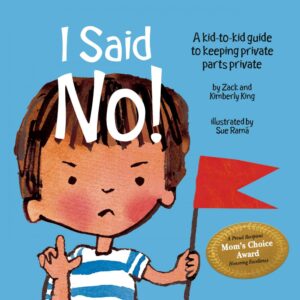
I Said No! A Kid-to-Kid Guide to Keeping Private Parts Private
Written by Zach and Kimberly King, illustrated by Sue Rama
This clever book helps kids understand boundaries, using “red flag” and “green flag” terminology. “It reviews a lot of classic scenarios in simple language,” says an expert from the Child Mind Institute. Ages 4-8. Published by Boulden Publishing.
ADHD
Popular children’s books about ADHD with emphasis on why it shouldn’t define them.

Cory Stories: A Kid’s Book About Living With ADHD
Written by Jeanne Kraus, illustrated by Whitney Martin
Cory tells readers about himself in this picture book with black-and-white illustrations. Cory says that sometimes kids make fun of him and he isn’t sure why. “Sometimes my whole body falls off the chair!” But readers also learn that Cory has persevered, concentrating in karate class, making friends at bowling club, and helping other kids with math. The important parting message: “Nobody needs to be good at everything. But I found out that I am good at a lot of things.” Ages 6-11. Published by Magination Press.
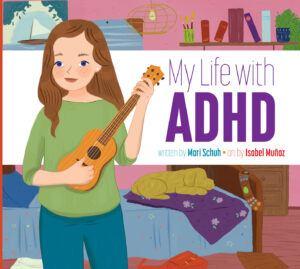
My Life with ADHD/Mi vida con TDAH
Written by Mari Schuh, illustrated by Isabel Muñoz
In a warm and friendly way, Annabelle, a real girl from Long Island, New York, explains how ADHD affects her. She talks about symptoms, medication, and helpful strategies. She reassures readers that “ADHD doesn’t stop me from doing most things.” For instance, Annabelle is a Girl Scout and loves to swim and run. “The book has good visuals too,” adds an expert from the Child Mind Institute. A Spanish language version is also available. Ages 6–9. Published by Amicus.
Anxiety
Popular children’s books on anxiety and how they can take charge of their fears.
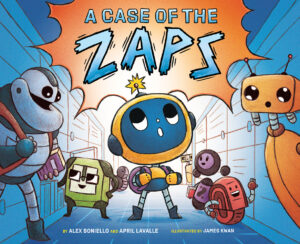
A Case of the Zaps
Written by Alex Boniello and April Lavalle, illustrated by James Kwan
A story of a kid robot who sometimes gets “the zaps” provides a clever way to introduce the concept of anxiety to kids, as well as ways to manage it. “This playful story is perfect for families looking to start open conversations about anxiety with their children while also normalizing the sensation of other emotions that come along with it,” says an expert from the Child Mind Institute. Ages 4–8. Published by Harry N. Abrams.

The Calm Workbook: A Kid’s Activity Book for Relaxation and Mindfulness
Written by Imogen Harrison
Through mazes, craft projects, and dozens of other fun exercises, kids learn how to let go of worries and remain calm. “The book will help children develop emotional awareness and recognize their feelings and how they experience them,” says an expert from the Child Mind Institute. “From here, a wide range of practical coping strategies can be tried out, practiced, and mastered.” The Calming Sparkle Jar project is especially fun. Ages 8–12. Published by Sky Pony Press.
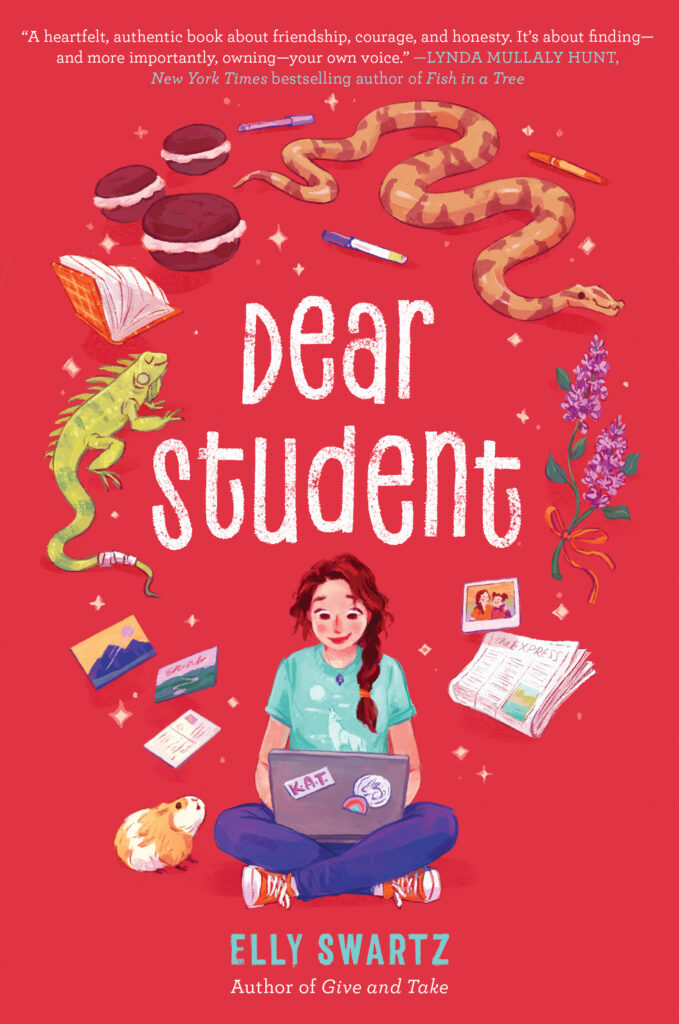
Dear Student
Written by Elly Swartz
Autumn has been struggling since her best friend moved away and her dad went to Ecuador with the Peace Corps. Trying not to let her social anxiety stop her from doing something new, she applies to be the secret voice of the school newspaper’s advice column — and she gets the job! When her friends write in for advice, Autumn is pushed outside her comfort zone. The book provides good examples of social anxiety-related thoughts, feeling embarrassed, words-getting-stuck syndrome, and a good theme of being brave,” says an expert from the Child Mind Institute. Ages 10–14. Published by Delacorte Press.
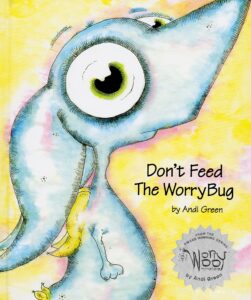
Don’t Feed the WorryBug
Written and illustrated by Andi Green
In this whimsical rhyming book, Wince, the monster of worries, learns that the more he worries, the more the pesky WorryBug grows. Eventually the WorryBug grows so big that it can’t be ignored, and Wince knows he needs to do something. The book does a good job of illustrating how anxiety can become overwhelming and teaches kids how they can take charge of their anxiety. Ages 3-8. Published by Monsters in My Head.
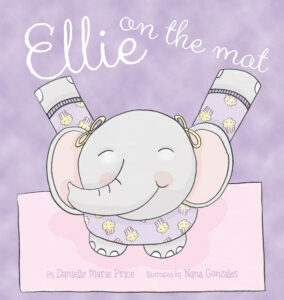
Ellie on the Mat
Written by Danielle Marie Price, illustrated by Nana Gonzales
One day, Ellie was feeling too grumpy to eat pancakes. Her mom says, “That happens sometimes” and gets a yoga mat out of the closet. Ellie and her mom do various yoga poses and breathing exercises. Then it’s pancake time! “A good introduction to mindfulness and yoga, this book highlights how trying something new can improve feelings,” says an expert from the Child Mind Institute. Ages 4–8. Published by Warren Publishing
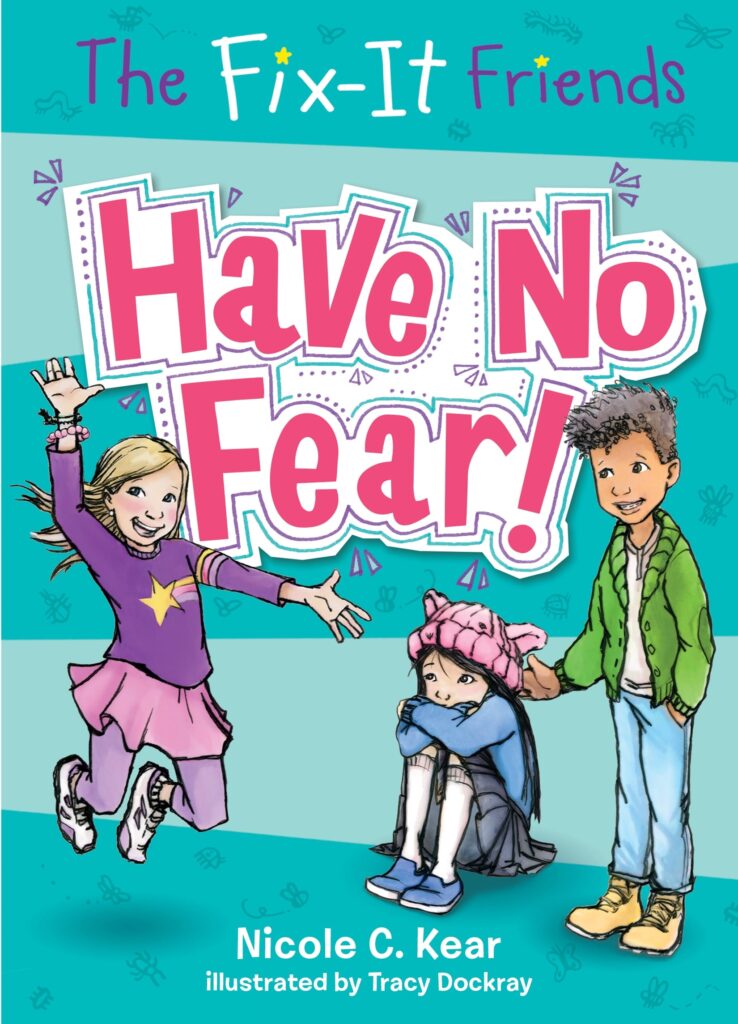
The Fix-It Friends: Have No Fear!
Written by Nicole C. Kear, illustrated by Tracy Dockray
Seven-year-old Veronica wants to help her classmate Maya conquer her fear of bugs, which is preventing her from playing at recess. Veronica comes up with a step-by-step plan that starts with drawing a spider. “Showing gradual exposure to anxieties is a great approach,” says an expert at the Child Mind Institute. Ages 7-10. Published by Imprint.

The Grip
Written by Marcus Stroman with Samantha Thornhill
Stroman, a pitcher for the Chicago Cubs, drew on some of his childhood experiences to write this fast-paced novel. Marcus wants to be the greatest pitcher of all time, and his dad pushes him hard to achieve his goals. But Marcus doesn’t believe in himself as much as his family does. Constant teasing about being short for his age begins to affect his game. Marcus’s mom takes him to see a mental health coach. “Marcus shares how he copes with the aftermath of divorce, very different parenting styles, bullying, and pressure from his dad and himself to excel as a young baseball pitcher,” says an expert from the Child Mind Institute. “Realistic and practical strategies to challenge and change negative thoughts and to practice mindfulness are woven into the narrative.” The verdict: It will grip the reader from start to finish! Ages 8–14. Published by Aladdin.
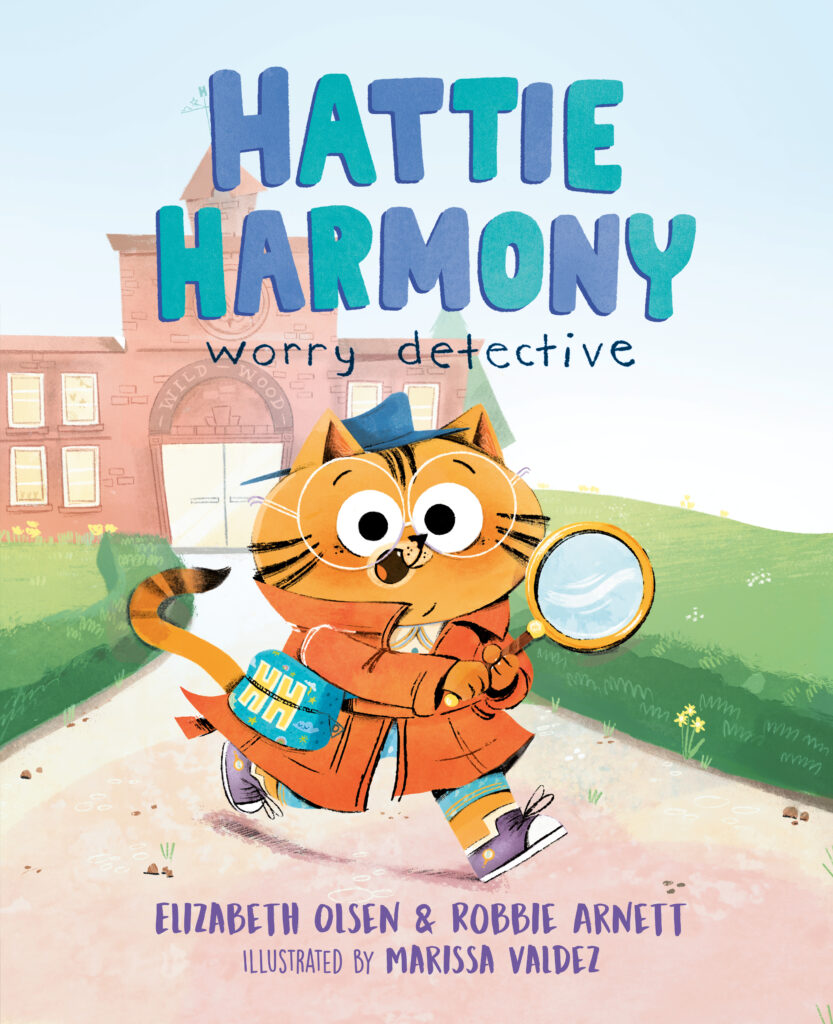
Hattie Harmony: Worry Detective
By Elizabeth Olsen and Robbie Arnett, illustrated by Marissa Valdez
In this helpful story to read before the first day of school, a cat detective gives her classmates smart advice about how to overcome their anxieties. For instance, when a fellow student tells Hattie that he’s nervous about standing up in front of the class, she pulls a squishy ball out of her Worry Detective Tool Belt. Hattie uses her toolkit to playfully demonstrate useful strategies like “movement activities, tensing and releasing muscles, coping self-talk, and mindful breathing,” says an expert from the Child Mind Institute. Ages 4–8. Published by Viking Books for Young Readers.
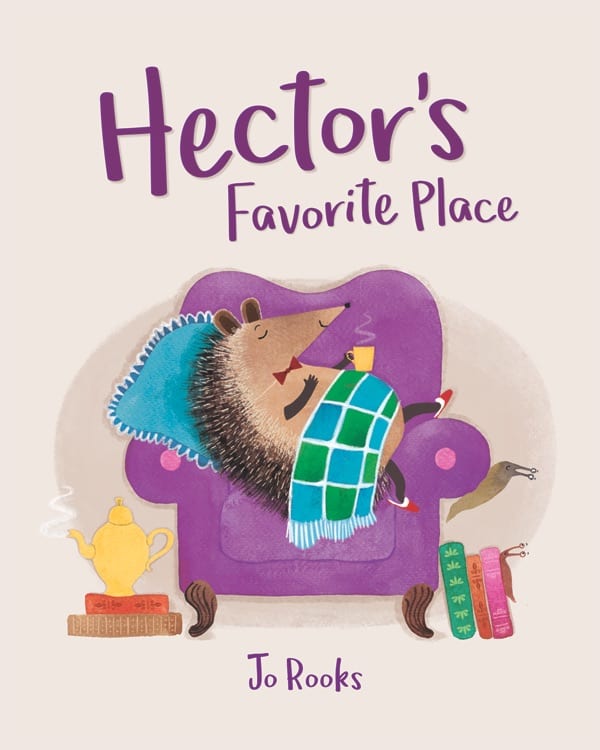
Hector’s Favorite Place
Written and illustrated by Jo Rooks
A cute hedgehog turns down ice-skating and playing in the snow with his animal friends because of his worries. “What if he had forgotten how to skate? He could fall and hurt himself.” When Hector receives a fun invitation to the Winter Forest Party, he hesitates for a while, and then realizes that he has to be brave. “It’s an adorable story,” says an expert at the Child Mind Institute. “I like that Hector does a little more, and then a little more, and so on.” Ages 4-8. Published by Magination Press.
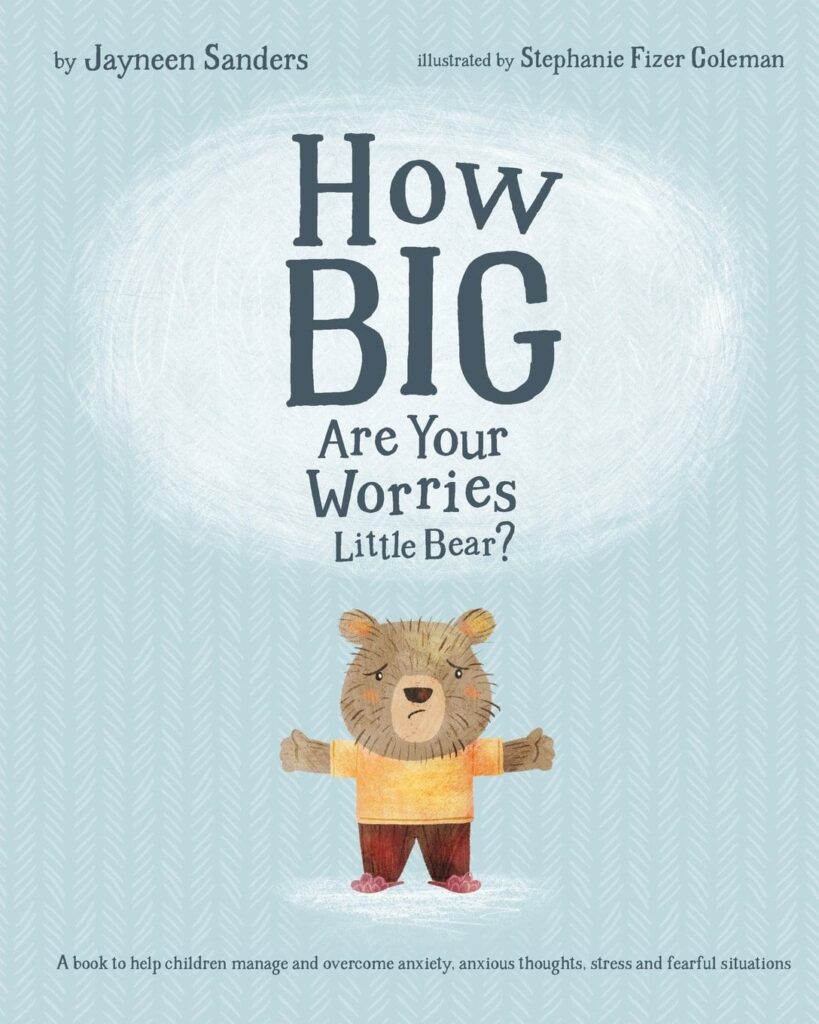
How Big Are Your Worries Little Bear?
By Jayneen Sanders, illustrated by Stephanie Fizer Coleman
Anxious about school, soccer practice, and monsters under his bed, baby bear worried day and night, despite his family telling him to stop worrying. But when his mom began encouraging him to talk about and even draw out his worries, the feelings began to subside. “I like that the book emphasizes the importance of sharing your thoughts and feelings,” says an expert at the Child Mind Institute. Another plus: The book suggests questions that you can ask your child as you’re reading together. Ages 6-10. Published by Educate2Empower Publishing.

Pilar’s Worries
Written by Victoria M. Sanchez, illustrated by Jess Golden
In this new picture book, Pilar lives and breathes ballet — she even does pliés while brushing her teeth. But auditioning for the winter ballet performance makes her feel scared, and she almost doesn’t go. By using smart coping techniques, like positive thinking and talking with her friends, she’s able to overcome her fears. Bravo! Ages 4-8. Published by Albert Whitman & Company.
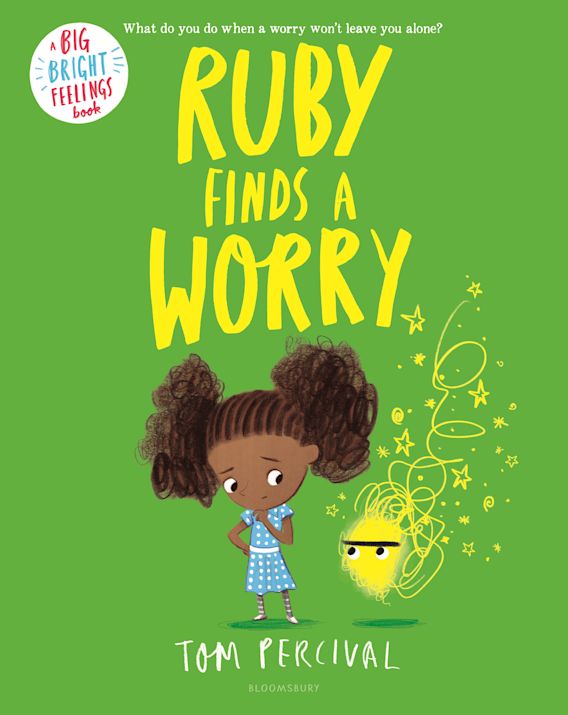
Ruby Finds a Worry
Written and illustrated by Tom Percival
This brilliantly illustrated story stands out for helping kids visualize anxiety and see how it grows. While playing at the park, Ruby discovers a worry — it’s depicted as a yellow blob with googly eyes that starts out small but gets bigger and bigger. Eventually, it stops her from doing the things she loves and she can’t stop thinking about it. But when she sees a boy sitting on a park bench next to a worry of his own, she starts to talk to him. Then both of their worries begin to fade. “Kids can easily identify with the images and simple storyline,” says an expert from the Child Mind Institute. Another notes that the story helps kids realize that everyone worries sometimes and encourages them to talk about their feelings. Ages 4–8. Published by Bloomsbury Children’s Books.
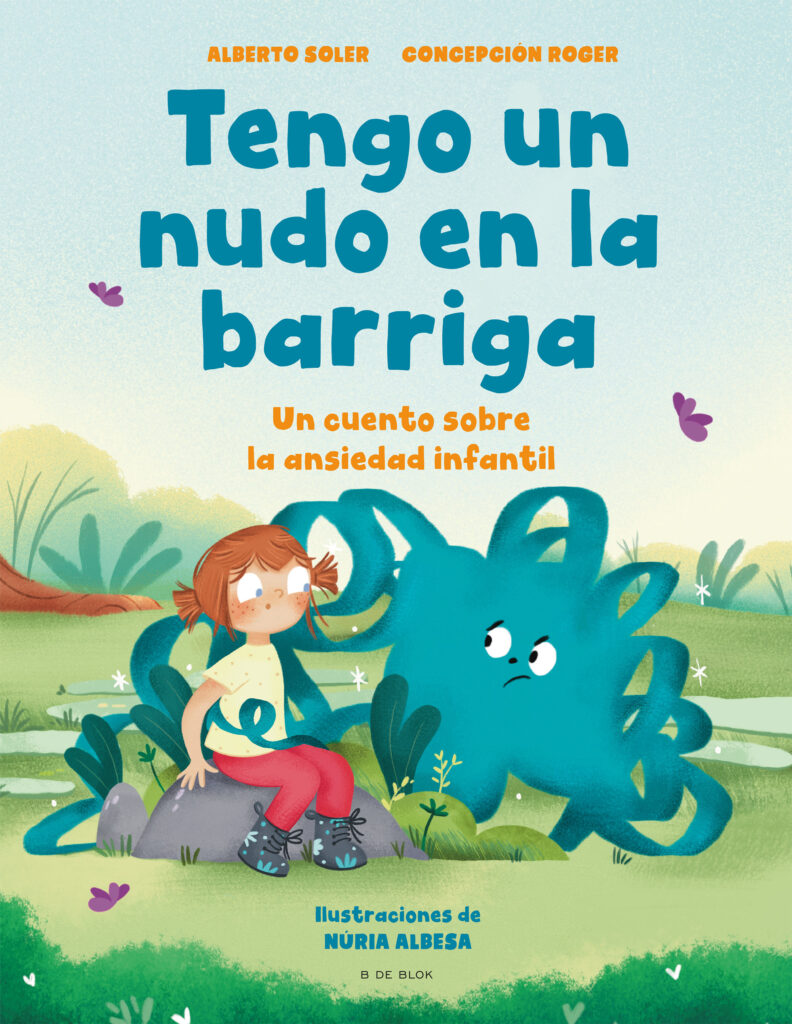
Tengo un nudo en la barriga
Written by Alberto Soler and Concepción Roger, illustrated by Nuria Albesa
Published exclusively in Spanish, this book focuses on a girl who begins to feel anxious. “It contains a great metaphor for anxiety — a knot in the stomach — and provides ways to talk back to the anxiety bully in all of us,” says an expert at the Child Mind Institute. Ages 4–8. Published by B De Blok.
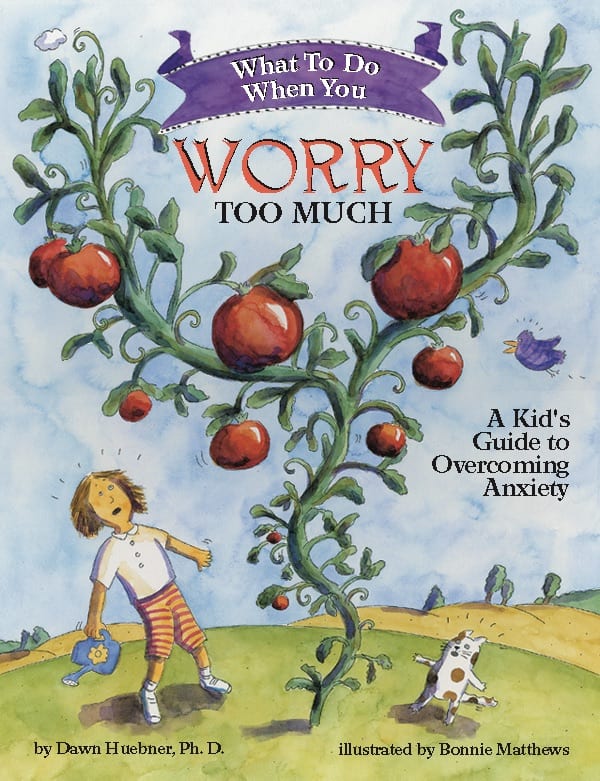
What to Do When You Worry Too Much: A Kid’s Guide to Overcoming Anxiety
Written by Dawn Huebner, illustrated by Bonnie Matthews
Designed for kids and parents to read together, this nine-chapter behavior therapy workbook covers topics like “How Do Worries Get Started?” and “Keeping Worries Away.” Suggestions include relaxation exercises and setting up a designated “Worry Time.” Several pages encourage kids to draw or write about their worries. The brilliant final page requests that kids draw a picture of themselves without worries. Ages 6-12. Published by Magination Press.
Autism
Popular children’s books about autism and related disorders.
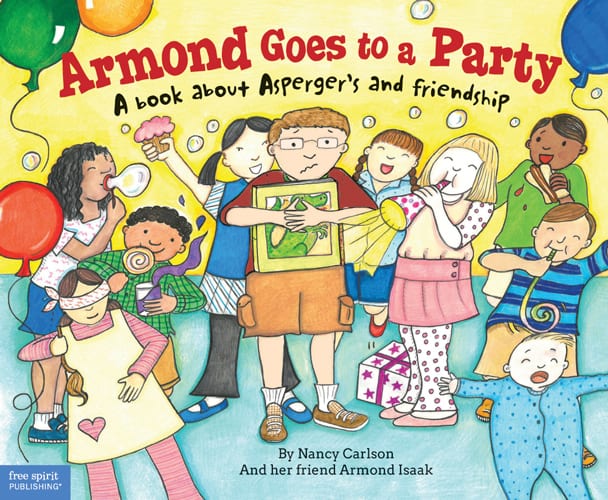
Armond Goes to a Party: A Book About Asperger’s and Friendship
Written by Nancy Carlson and Armond Isaak, illustrated by Nancy Carlson
Co-written by a boy with Asperger’s, this picture book “gives a simple understanding of why children with Asperger’s struggle to attend parties, and talks about the importance of learning flexibility,” says an expert at the Child Mind Institute. (For more about the term Asperger’s and its relationship to autism, see our guide to autism terminology.) Readers may relate to Armond’s fear of balloons popping and not being able to think of anything to say. In the end, Armond admits to his mom that the party was hard, but he’s glad he went. Ages 4-8. Published by Free Spirit Publishing.
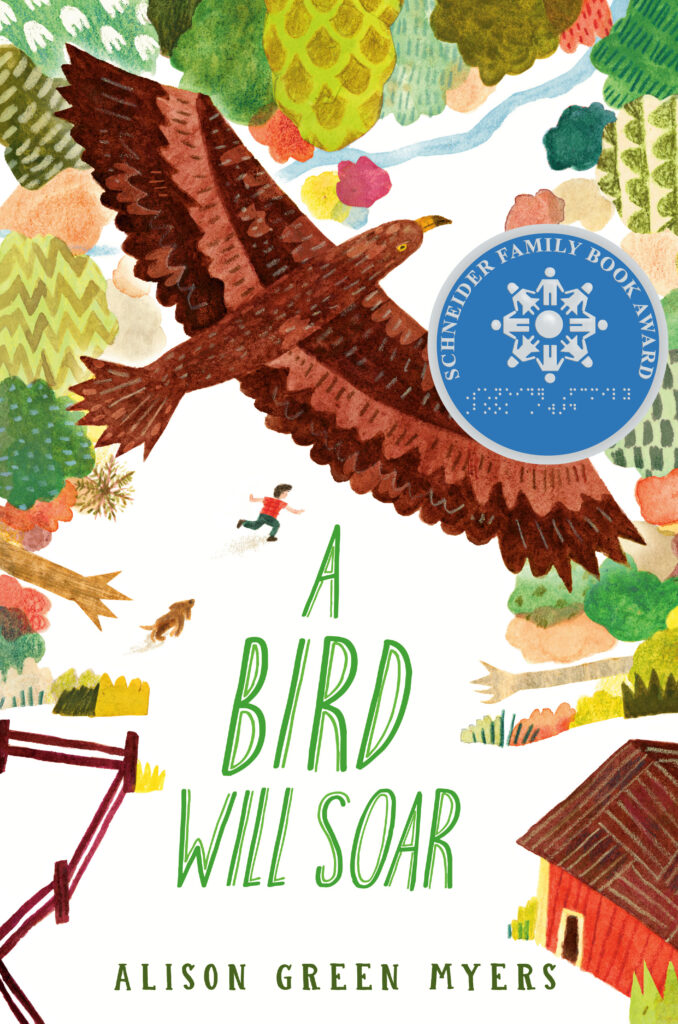
A Bird Will Soar
Written by Alison Green Myers
For Axel, who has autism, the sudden changes that a tornado brings are extra hard to handle. The storm damages Axel’s house and his beloved eagle’s nest. His dad comes back home to help with the damage. “The book provides a great depiction of complicated and changing family dynamics,” says an expert from the Child Mind Institute. “It features multiple autistic characters and discusses needs related to sensory and information processing.” Readers who are especially interested in birds, animals, or nature will enjoy this story. Ages 9–12. Published by Dutton Children’s Books.
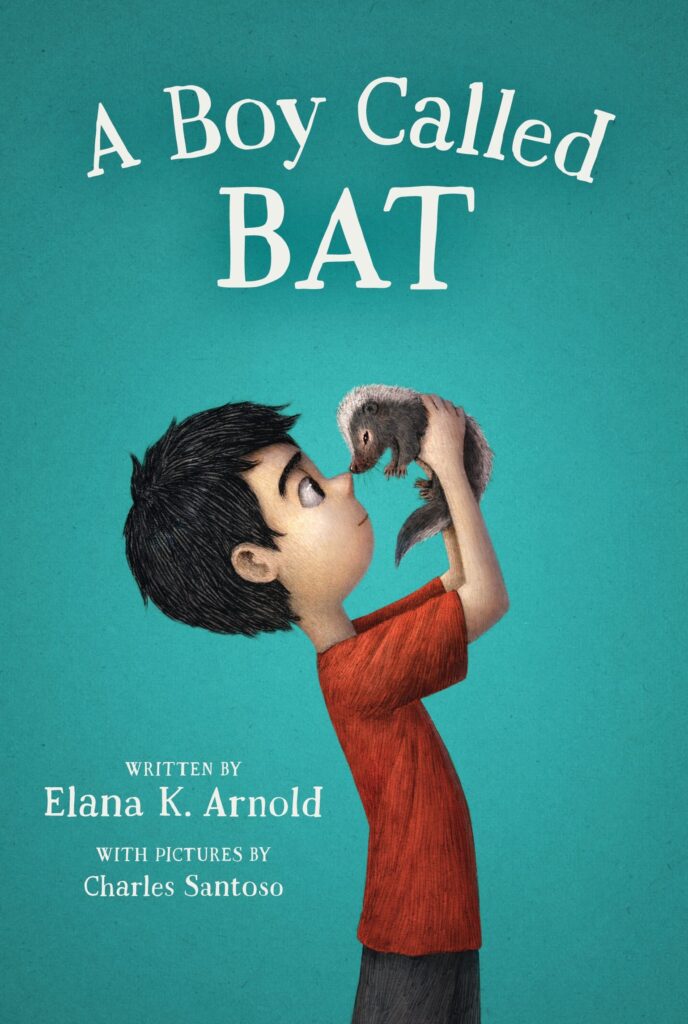
A Boy Called Bat
Written by Elana K. Arnold, illustrated by Charles Santoso
On the surface, it’s a sweet boy-wants-pet story. Bixby’s (aka Bat’s) mom is a veterinarian, and she brings home a baby skunk that he desperately wants to keep. But readers with autism may relate to chatter about itchy and uncomfortable clothes, sticking with routines, and only having friends who are grown-ups. “It does a wonderful job of describing the day-to-day experience of high-functioning children with ASD,” says an expert at the Child Mind Institute. Ages 6-10. Published by Walden Pond Press.

Good Different
Written by Meg Eden Kuyatt
Inspired by the author’s own childhood experiences on the autism spectrum, this novel in verse (poetry) explores what it’s like for a 12-year-old who has to keep her feelings locked inside. She usually follows the rules for “being normal,” until one day she can’t hold it together anymore. Although tough at first, it’s the turning point that puts her on a path to celebrate her differences rather than hiding them. “I loved this book,” says an expert from the Child Mind Institute. “It’s a beautiful story about family relationships, support, and how to communicate with people you love but can’t completely relate to. It emphasizes compassion and has a great discussion about the ways that social norms help and hurt.” Ages 8–12. Published by Scholastic Press.
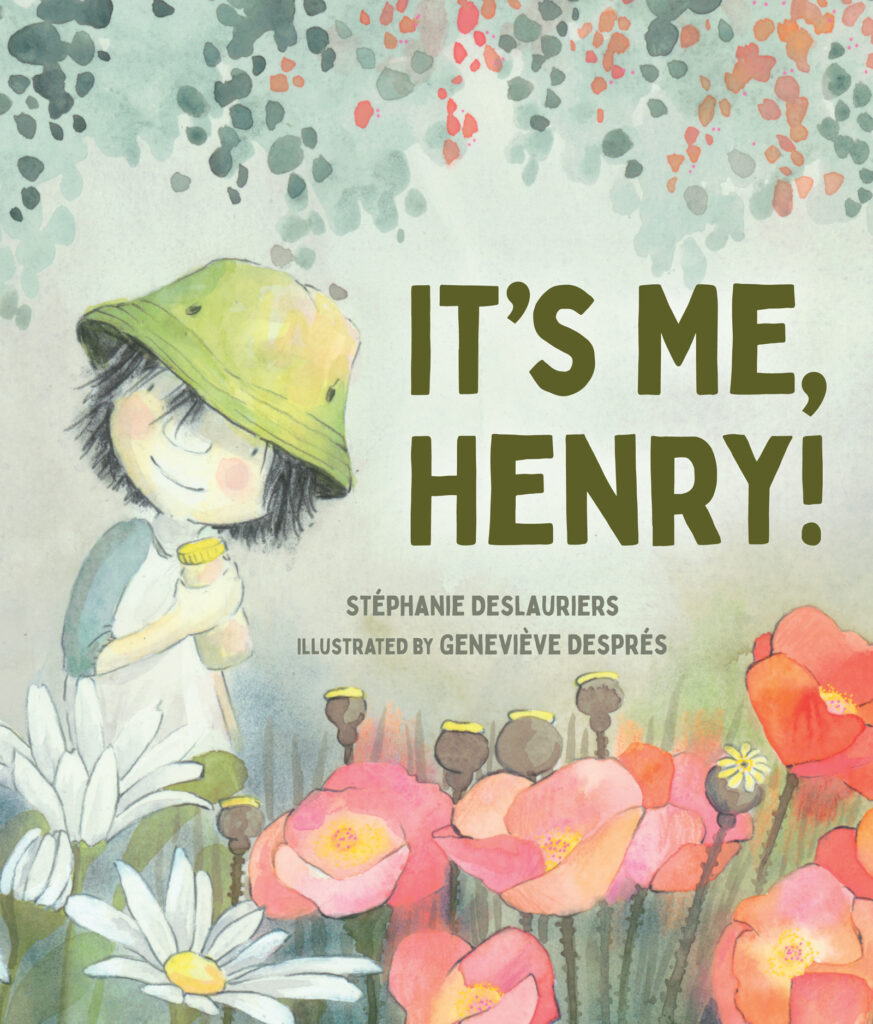
It’s Me, Henry!
Written by Stéphanie Deslauriers, illustrated by Geneviève Després
Henry, a boy on the autism spectrum, forgets to raise his hand in school and offends his classmate Daisy by using her Latin plant name, Leucanthemum vulgare. While his fellow students sometimes find him odd or annoying, a field trip to the local botanical garden allows Henry’s knowledge to shine and his classmates are wowed. “This beautifully illustrated book normalizes the common challenges of neurodiverse children,” says an expert from the Child Mind Institute. “It also highlights that a special interest can be a source of peer connection.” Ages 4–8. Published by Orca Book Publishers.
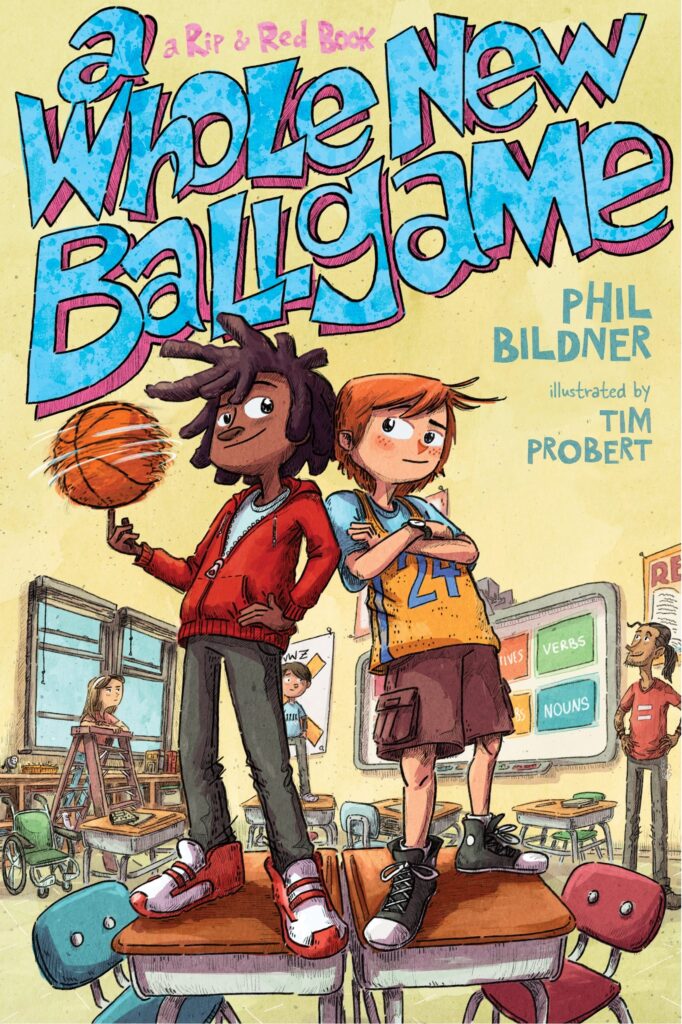
A Whole New Ballgame: A Rip and Red Book
Written by Phil Bildner, illustrated by Tim Probert
In the first book of a series, best friends Rip and Red have just started fifth grade. Red has autism, and Rip doesn’t. Their common passion: basketball. Many chapters like “Hoops Madness” and “Bulldozed and Blitzed” focus on their adventures on the school’s b-ball team. “It’s not a book that’s obviously about autism,” says an expert at the Child Mind Institute. “It’s a fun, lighthearted story with characters that will seem very relatable to tweens.” Ages 8-12. Published by Square Fish.
Body Image and Eating Disorders
Popular children’s books on body image, eating disorders, and the importance of body positivity.

Beautifully Me
Written by Nabela Noor, illustrated by Nabi H. Ali
Diversity advocate and mom Nabela Noor writes a moving story about a young Bangladeshi girl who wonders if there is something wrong with the way she looks. Her worries begin after she hears her mom, dad, and sister being critical of their own weight. At dinner, the girl tells her family that she wants to go on a diet, too. Surprised by her comment, the family discusses what beauty means. “The story has a wonderful message about looking internally for beauty, watching the things we say in front of others, and sharing kindness with the world,” says an expert from the Child Mind Institute. Ages 4–8. Published by Simon & Schuster Books for Young Readers.
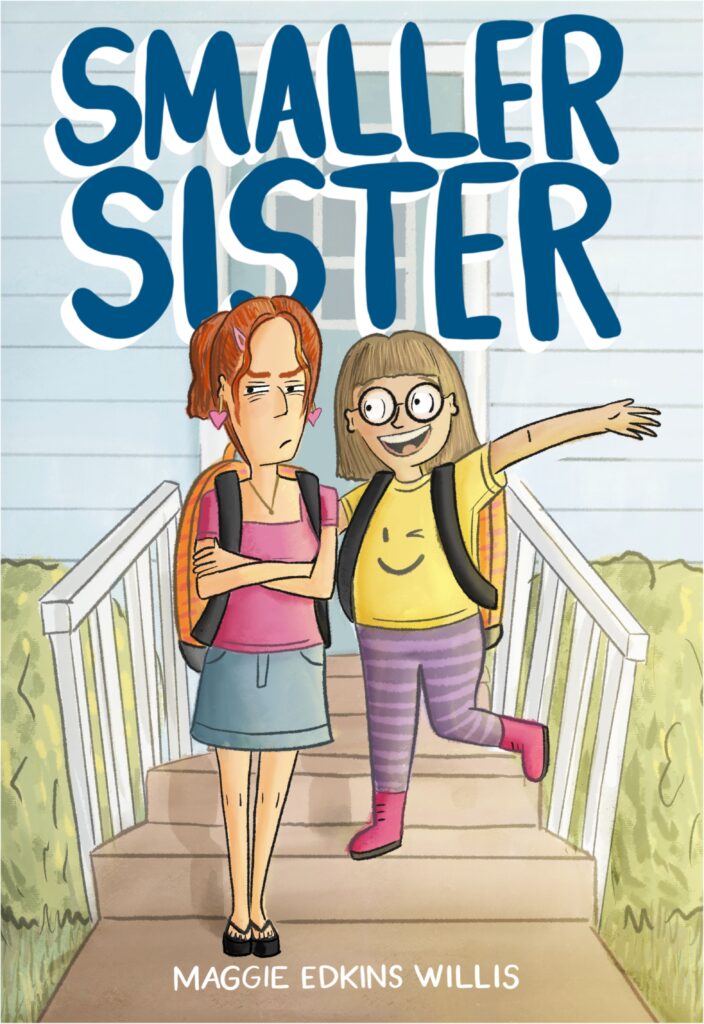
Smaller Sister
Written and illustrated by Maggie Edkins Willis
With realistic-sounding dialogue and brilliant illustrations, this graphic novel deftly conveys the impact of eating disorders on two sisters and their family. At first, the older sister is diagnosed with anorexia nervosa. Eventually the younger sister struggles with body image too. “The book presents digestible conversations about eating disorder development, treatment, and its relevance in middle and high school settings,” says an expert from the Child Mind Institute. It also presents healthy strategies to avoid disordered eating, such as surrounding yourself with positive friends rather than those who criticize your body. Ages 10–14. Published by Roaring Brook Press.
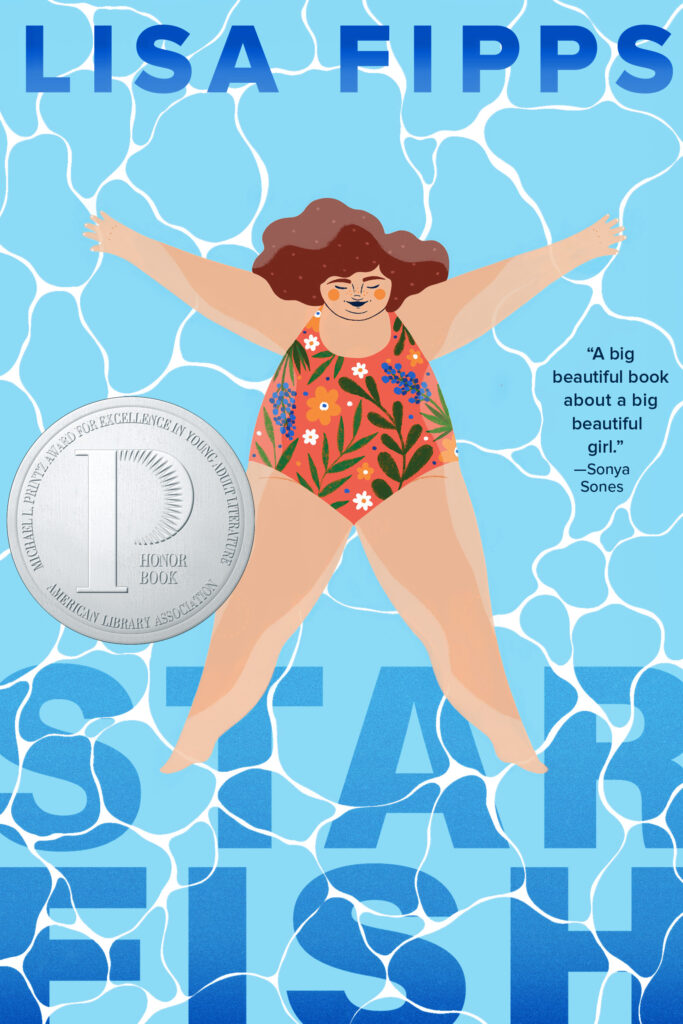
Starfish
Written by Lisa Fipps
In this critically acclaimed novel in verse (poetry), Ellie has been bullied about her weight since she was five years old. She made “Fat Girl Rules” that she follows, including not eating in public. With a strong support network — a friend, her father, and a therapist — will she be able to put the Fat Girl Rules behind her and show the world her fabulous self? “Highlighting the importance of body positivity, this book shows the impact that therapy can have on helping someone handle difficult emotions and developing skills to voice their needs and opinions to others,” says an expert from the Child Mind Institute. Ages 10–14. Published by Nancy Paulsen Books.

Taking Up Space
Written by Alyson Gerber
In seventh grade, Sarah starts to feel slower on the basketball court. Her body is changing — and she doesn’t like it one bit. She begins skipping meals and her discomfort with her body grows. “The book presents a nuanced take on disordered eating behaviors, including a mother’s role in a child’s eating and relationship with food,” says an expert from the Child Mind Institute. Ages 8–12. Published by Scholastic Inc.

You Are Enough! Your Guide to Body Image and Eating Disorder Recovery
Written by Jen Petro-Roy
The author sprinkles her personal experiences with an eating disorder into this well-organized self-help book. “It offers guidance and practical tools for those struggling with disordered eating and negative body image,” says an expert from the Child Mind Institute. The chapters on perfectionism, selfie culture, and clothing sizes are especially interesting. Action items include creating a self-soothing tool kit and creating a list of people you admire. Ages 9–14. Published by Feiwel & Friends.
Bullying
Popular children’s books that cover bullying and show ways to respond to it.

Am I a Bully?
Written by Hope Gilchrist, illustrated by Zoe Jordon
Toby makes his friends laugh when he teases a classmate over his weird clothes. He’s just trying to be funny and he isn’t beating anyone up, so he can’t be a bully — can he? This independently published paperback helps children recognize when teasing crosses the line into bullying. Ages 6-9. Published by CreateSpace Independent Publishing Platform.

Chrysanthemum
Written and illustrated by Kevin Henkes
This sweet story prepares kids for how short-lived teasing can be. On the first day of school, Victoria picks on Chrysanthemum because she has the same name as a flower, and Chrysanthemum wilts under the ridicule. Then the students learn that a teacher has a similar name, and all of a sudden Chrysanthemum is cool. Ages 4-8. Published by Mulberry Books.

Tease Monster: A Book About Teasing vs. Bullying
Written by Julia Cook, illustrated by Anita DuFalla
Particularly good for an anxious or literal child, this rhyming book helps distinguish between teasing and bullying. “There are two types of teasing: the nice and the mean,” Cook writes. “You think that everyone’s against you, but it’s not like it seems.” Readers will learn strategies for responding to both good-natured teasing and bullying. Ages 5-10. Published by Boys Town Press.
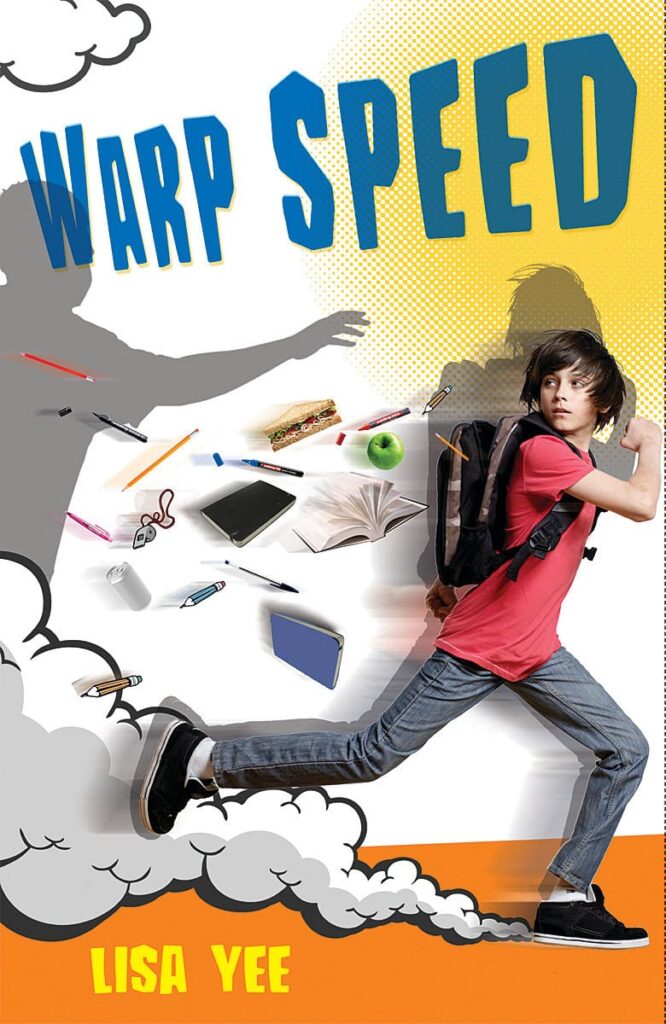
Warp Speed
Written by Lisa Yee
In a fast-paced chapter book that will appeal to reluctant readers, Marley thinks seventh grade will be boring until he draws attention from the school bully. Digger pushes Marley down in the hallway, and the drama unfolds. “It’s a very relatable story for kids who feel like outsiders,” says an expert at the Child Mind Institute. Bonus: If your child is a fan of Star Wars, there are loads of references. Ages 8-12. Published by Arthur A. Levine Books.
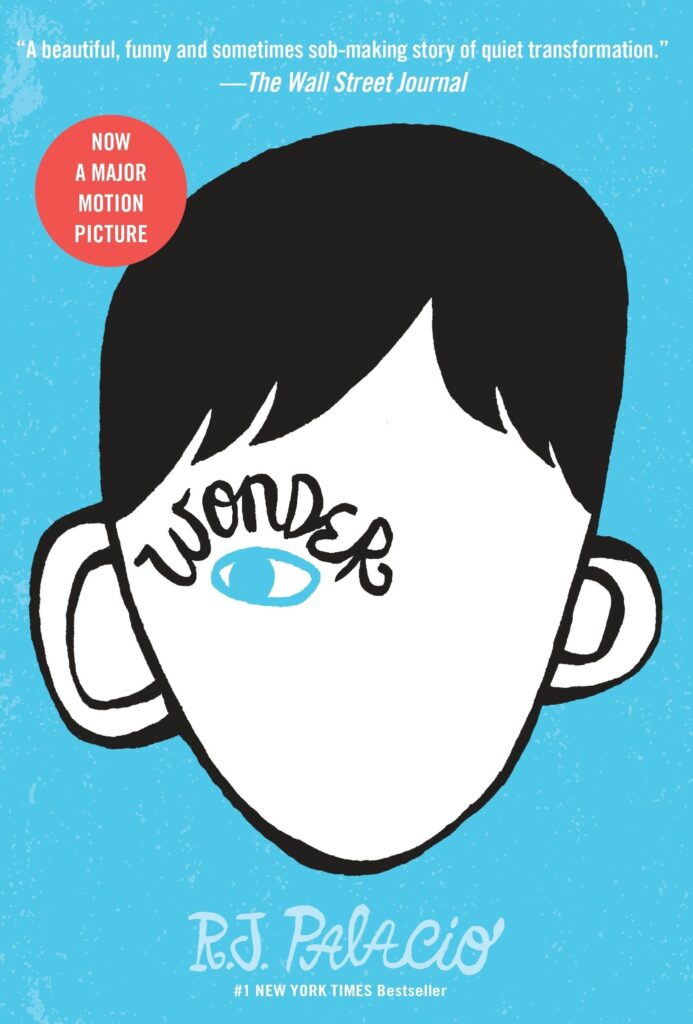
Wonder
Written by R.J. Palacio
In this popular chapter book that spurred the “Choose Kind” movement in classrooms, a boy with a facial deformity switches to a mainstream school for the fifth grade and is bullied. “But he has a strong network of family and friends to help him overcome bullying,” says an expert at the Child Mind Institute. “Ultimately, the readers will see how differences should be celebrated.” Ages 8+. Published by Knopf Books for Young Readers.
Depression
Popular children’s books about depression and handling complex emotions.
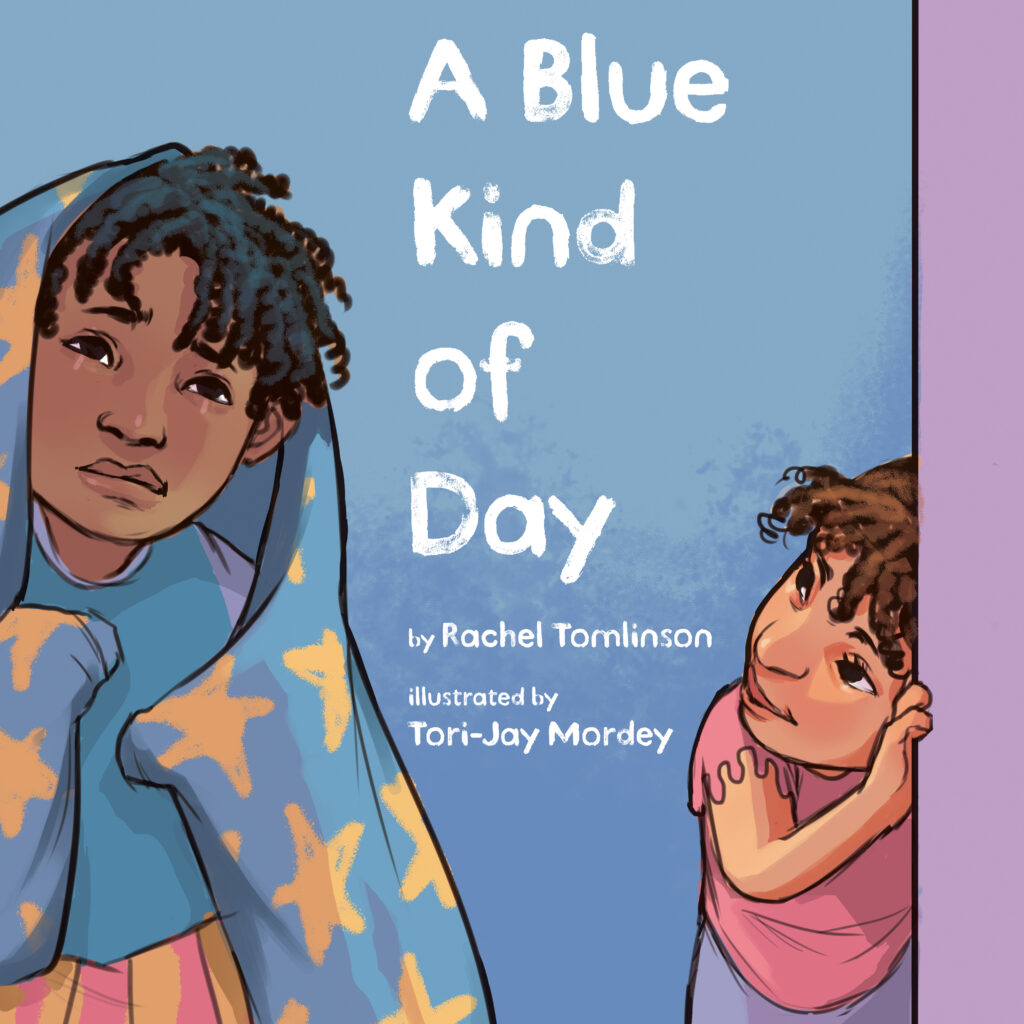
A Blue Kind of Day
Written by Rachel Tomlinson, illustrated by Tori-Jay Mordey
Kids and parents alike will find helpful messages in this story about a boy who feels too sad to get out of bed. The boy’s parents and younger sibling try to cheer him up with jokes, silly faces, and toys. But, ultimately, it takes a lot of waiting and love. “Young children will find it helpful to see images of someone who is sad being supported and not rushed to come out of sadness,” says an expert from the Child Mind Institute. “Plus, for parents, the story models how to validate and sit with discomfort instead of trying to fix the situation for their children.” An author’s note from Tomlinson, a psychologist, is directed to parents. Ages 4–8. Published by Kokila.

Dark Cloud
Written by Anna Lazowski, illustrated by Penny Neville-Lee
Sadness and other big emotions take the form of a dark cloud, a ball of worries, and a swirl of fog in this lyrical book about childhood depression. The cloud usually follows as Abigail goes about her activities, but sometimes she’s able to leave it behind. At the beach, for instance, she traps it in a sandcastle and goes for ice cream. “The illustrations really help the story come to life and provide an easier way for young kids who may not have the vocabulary to describe their emotions,” says an expert from the Child Mind Institute. “The images of the character embracing her cloud and finding enough distance from it to see light and joy are heartwarming and provide hope.” Ages 4–8. Published by Kids Can Press.
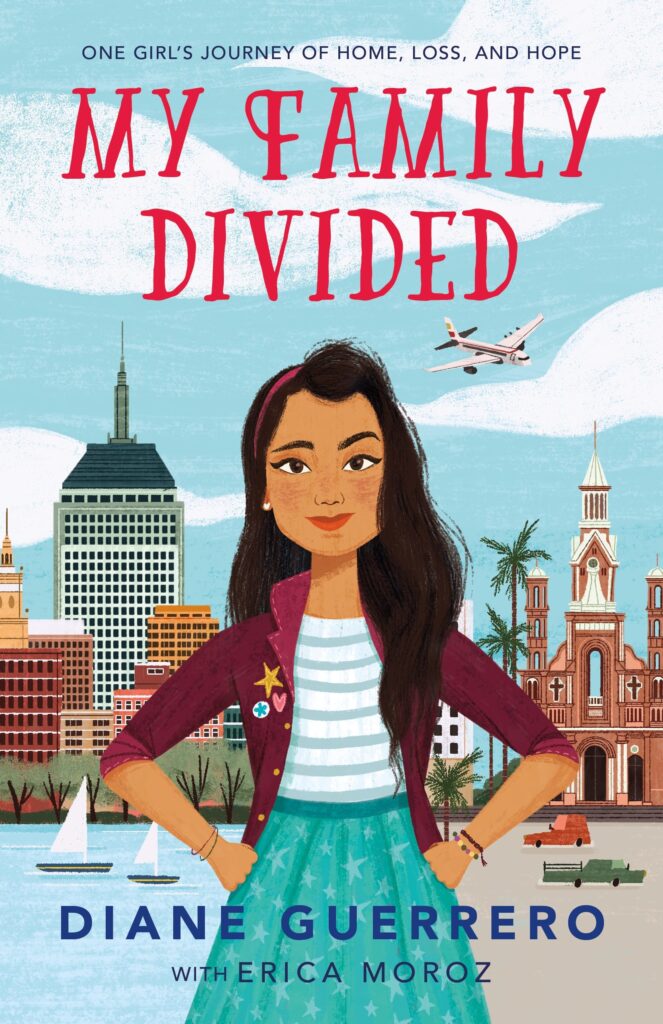
My Family Divided: One Girl’s Journey of Home, Loss, and Hope
Written by Diane Guerrero with Erica Moroz
An actress on TV shows such as Orange Is the New Black, Guerrero shares the heartbreaking story of her Colombian parents being deported when she was 14. She also reveals how she battled depression, and had suicidal thoughts in her early 20s. “I wanted so badly to prove that I could take care of myself. That I didn’t need anyone. That I was grown-up,” she writes. “By the time I admitted to myself that I did still need others, I had pushed away the people I loved.” Ages 12+. Published by Henry Holt and Co.
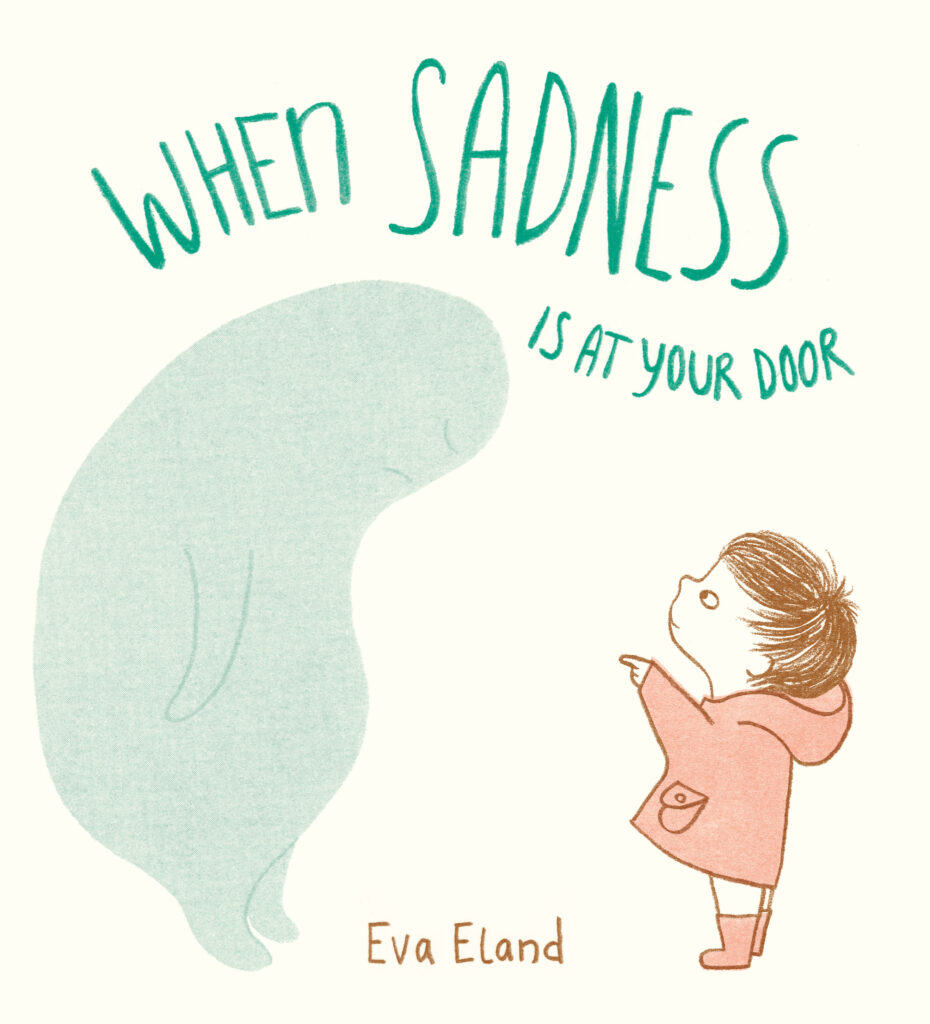
When Sadness Is at Your Door
Written and illustrated by Eva Eland
Portraying sadness as a visitor that you shouldn’t be afraid of, this book makes it easier for kids to imagine the emotion as something outside themselves. When sadness arrives, the main character still reads, plays, and decides sadness doesn’t want to stay indoors. “The idea of continuing to do things with sadness is important,” says an expert from the Child Mind Institute. “It’s something that’s with the child, but doesn’t define them.” Ages 3–8. Published by Random House Books for Young Readers.
Dyslexia
Popular children’s books about dyslexia, self-esteem, and positive messages about hard work.
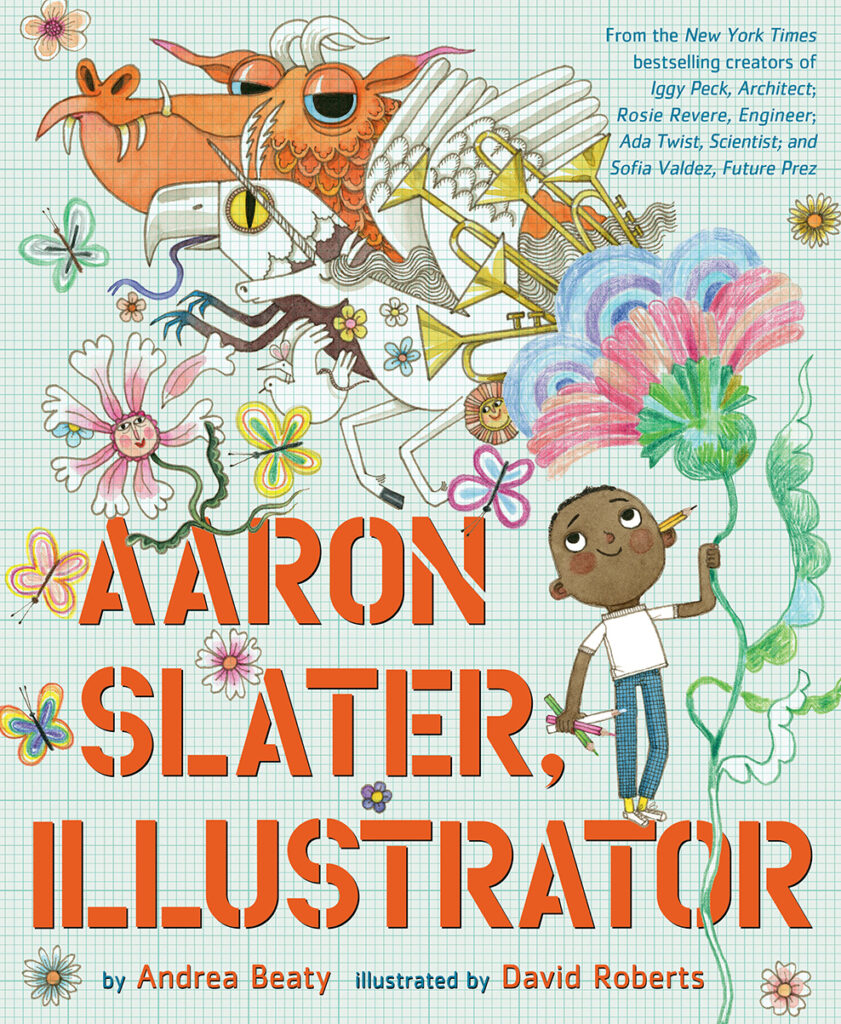
Aaron Slater, Illustrator
Written by Andrea Beaty, illustrated by David Roberts
In this best-selling rhyming book, Aaron wants to be a storyteller, but he’s having trouble putting a single word down on a piece of paper. Then he realizes his strength is his imagination. “The book shows that reading struggles are not rooted in lack of interest, motivation, or intelligence,” says an expert from the Child Mind Institute. “You can feel the character’s pain and joy as he finds a way to express himself.” This book is printed in a dyslexia-friendly font. Ages 4–8. Published by Harry N. Abrams.
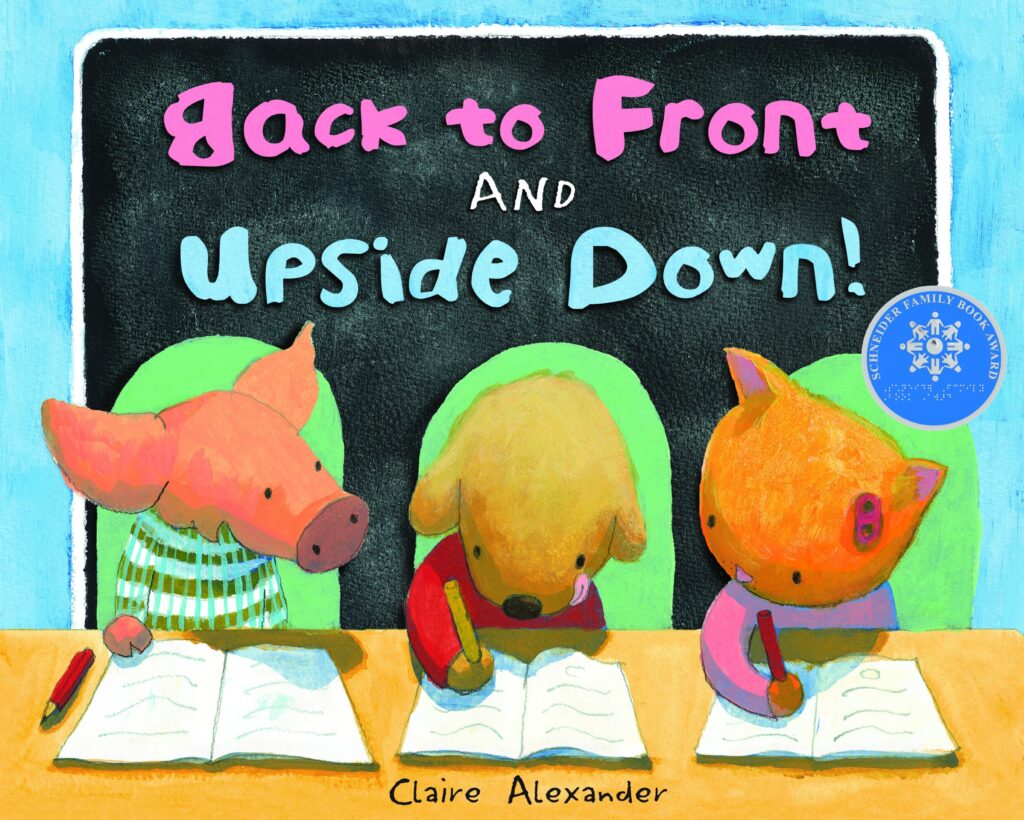
Back to Front and Upside Down!
Written and illustrated by Claire Alexander
This sweet picture book follows Stan, a puppy, and his animal classmates. Stan’s letters come out “back to front and upside down, and some didn’t look like letters at all,” but he’s afraid to ask his teacher for help because he thinks the other kids will laugh at him. When he finally does, he learns that with help — and lots of practice — he can succeed. “The book sends the positive message that things will get better with a bit of hard work,” says an expert at the Child Mind Institute. Ages 4-8. Published by Eerdmans Books for Young Readers.
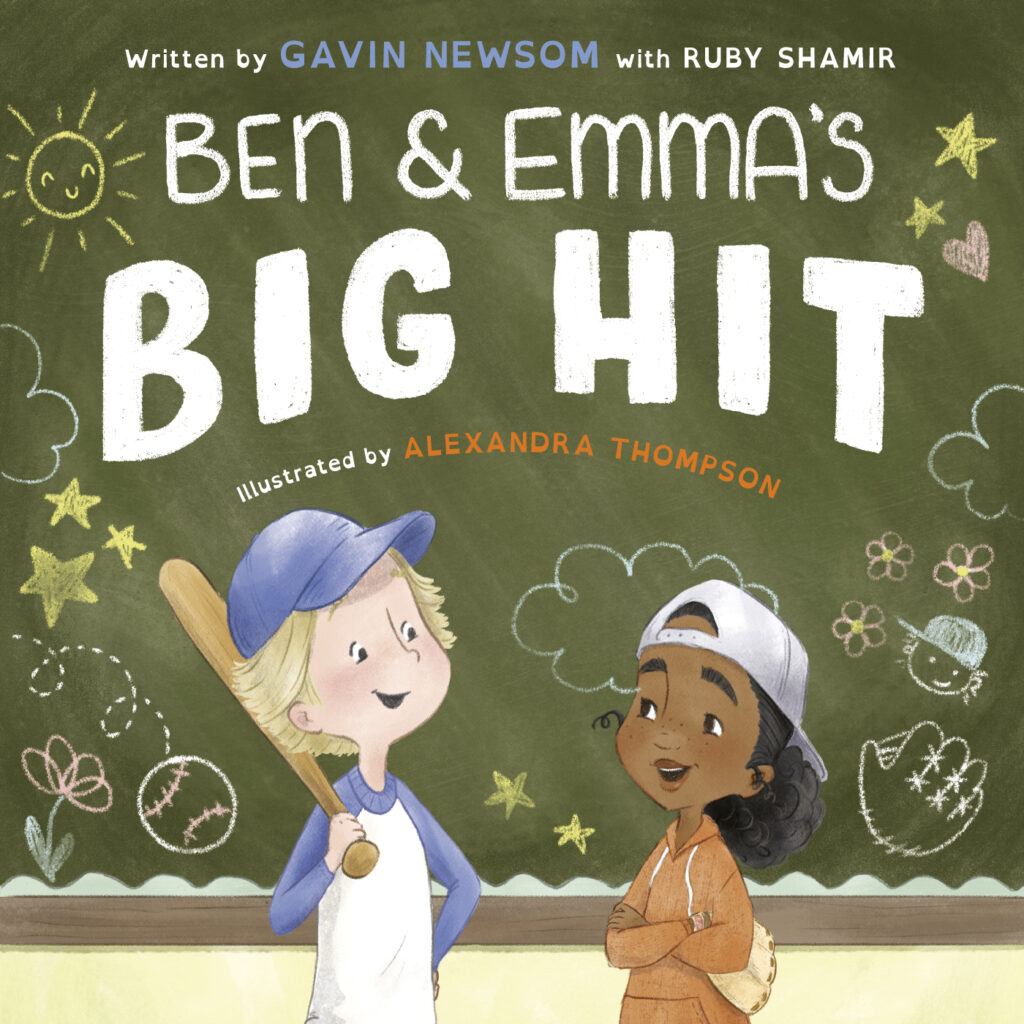
Ben & Emma’s Big Hit
Written by Gavin Newsom with Ruby Shamir, illustrated by Alexandra Thompson
Ben, a star baseball player, is frustrated that he’s not learning to read as easily as his classmates, especially Emma, who carries around big books. But everything isn’t as it seems. “A sweet and simple story that provides encouragement and normalization to struggling readers, with an emphasis on reinforcing effort, practice, and hard work,” says an expert from the Child Mind Institute. One of the best parts: the letter at the end from California governor and the book’s author, Gavin Newsom, who calls his dyslexia a gift. Ages 5–9. Published by Philomel Books.
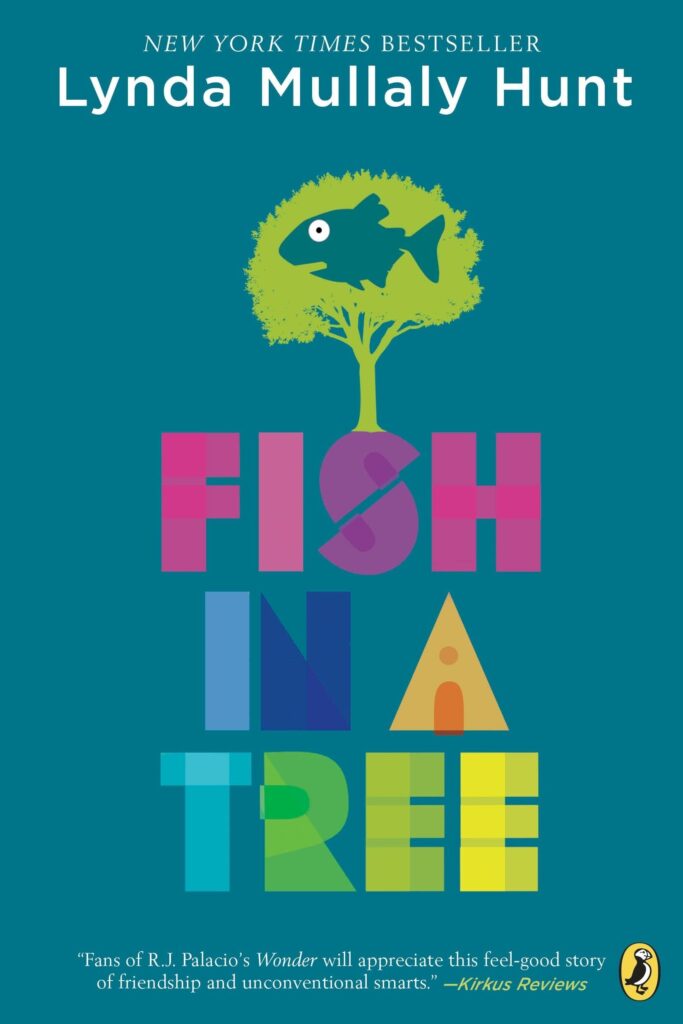
Fish in a Tree/Como pez en el árbol
Written by Lynda Mullaly Hunt
This inspirational chapter book captures the challenges students with dyslexia face daily, not just in reading but in self-esteem. The main character, Ally, has been able to hide her inability to read in every school — until now. “The arc of the story changes when Ally makes friends and finally finds a teacher who recognizes her struggles and how smart she is,” says an expert at the Child Mind Institute. A Spanish language version is also available. Ages 8-12. Published by Puffin Books.
Feelings
Popular children’s books on feelings and managing complex emotions.

Dragons on the Inside and Other Big Feelings
Written by Valerie Coulman, illustrated by Alexandra Colombo
Especially useful for kids who have trouble verbalizing their emotions, this story demonstrates that feelings aren’t always visible to others. During various stressful situations, ranging from playing goalie for the first time to starting at a new school, the book illustrates the wild swings of emotions a boy experiences. One minute there’s a roller coaster screaming through his ribs, the next he’s in a cave full of bats. “It also provides great examples of when those emotions may surface and models calming strategies,” says an expert from the Child Mind Institute. Ages 4–8. Published by Free Spirit Publishing.

I Want to Be Mad for a While!
Written and illustrated by Barney Saltzberg
This short rhyming book with expressive cartoon-like illustrations will help validate the big feelings of toddlers and preschoolers. A young cat, who doesn’t want to be cheered up, questions “Why do I have to be happy?” before insisting that he wants to be mad for a while and throwing himself on the floor. “The book includes great analogies, such as describing anger as ‘feeling like a crocodile,’” says an expert from the Child Mind Institute. “I also appreciated that it’s not about getting rid of the emotion, but managing it with strategies like alone time and talking to someone.” Ages 3–5. Published by Orchard Books.
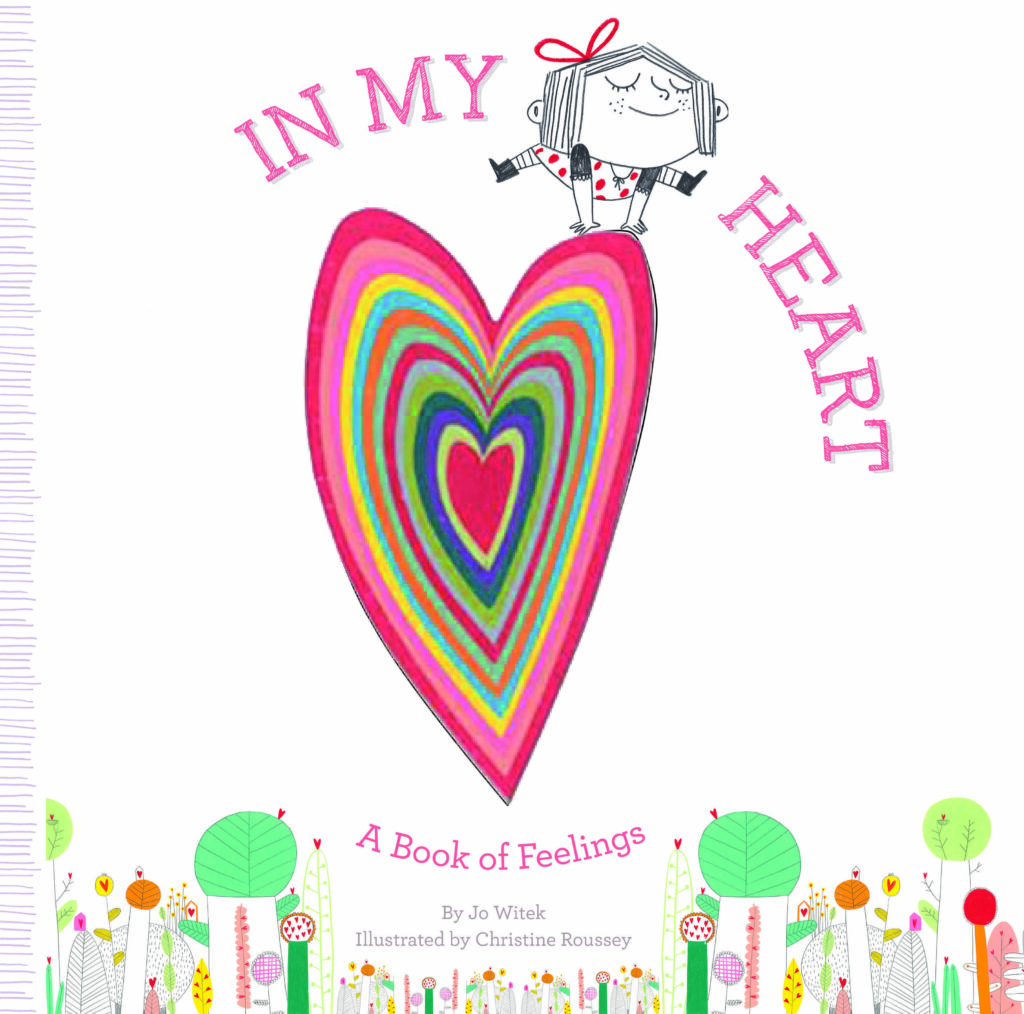
In My Heart: A Book of Feelings
Written by Jo Witek, illustrated by Christine Roussey
In this sturdy book with beautiful heart-shaped cutouts, a girl explains that her heart is full of feelings. Each spread focuses on a different emotion, such as happiness, bravery, and fear. The descriptions of the feelings are particularly engaging: “Some days my heart feels as heavy as an elephant. There’s a dark cloud over my head and tears fall like rain. This is when my heart is sad.” Ages 3-6. Published by Harry N. Abrams.
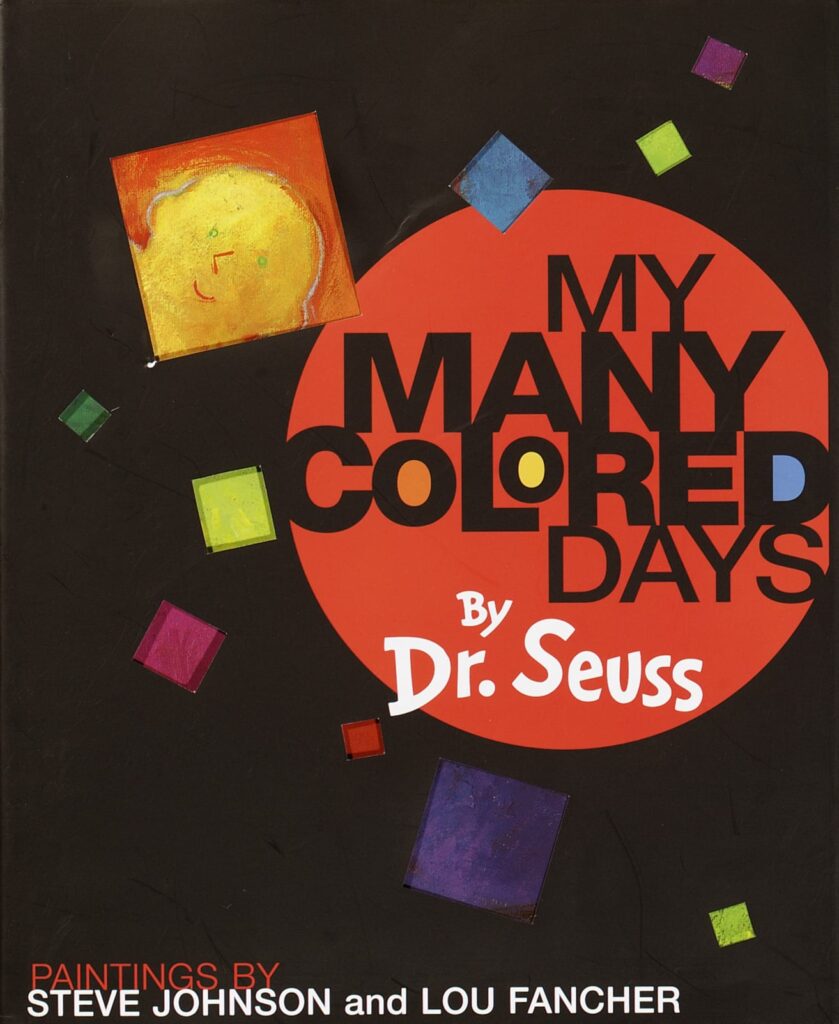
My Many Colored Days
Written by Dr. Seuss, illustrated by Steve Johnson and Lou Fancher
This little-known Dr. Seuss story gives young kids a groundwork for describing their feelings, normalizing the experience of having multiple emotions. Bonus: It will also help toddlers and preschoolers learn colors. Ages 3-5. Published by Knopf Books for Young Readers.
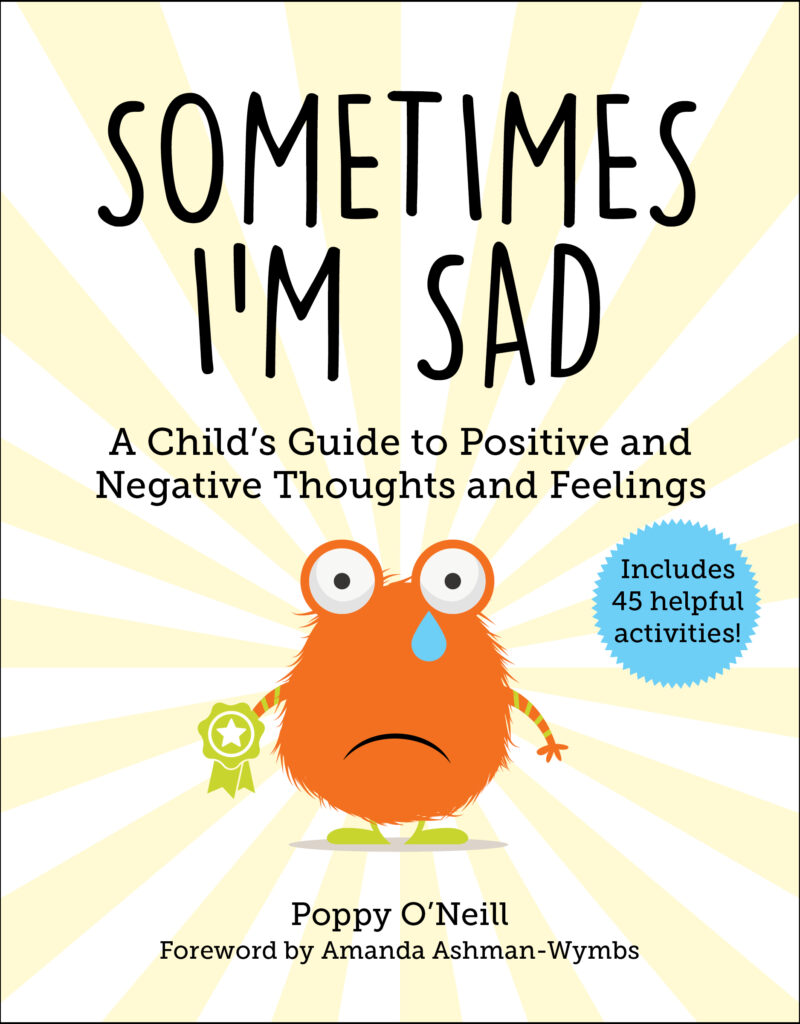
Sometimes I’m Sad: A Child’s Guide to Positive and Negative Thoughts and Feelings
Written by Poppy O’Neill
Packed with 45 self-help activities that most kids as young as age eight or nine can complete on their own, this workbook could serve as a great addition to therapy or a stand-alone resource. Activities include breathing exercises, a gratitude journal, and a positivity scavenger hunt. “The book contains practical and accessible interventions that many children could benefit from,” says an expert from the Child Mind Institute. “The information is presented in an easy-to-understand and fun format. Overall, it’s a self-help book that kids will enjoy.” Ages 8–12. Published by Sky Pony Press.
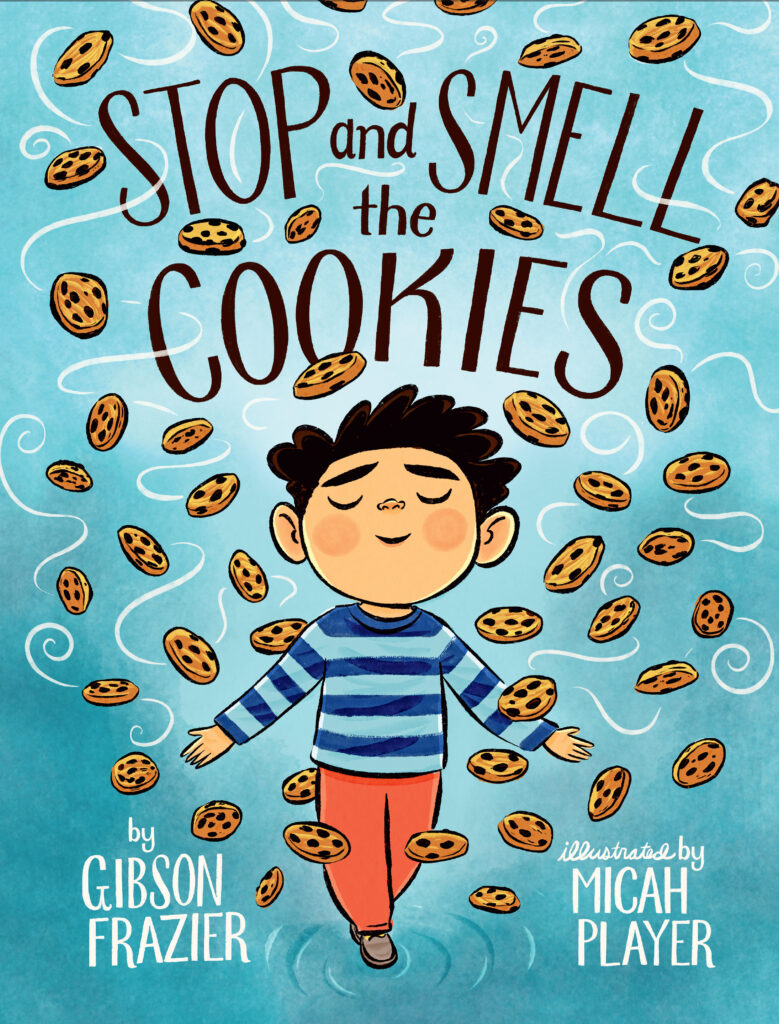
Written by Gibson Frazier, illustrated by Micah Player
This must-read for children who have trouble with impulse control highlights a clever technique to help manage behavior. Dash says he knows right from wrong, but that doesn’t stop him from blowing out the candles on his friend’s birthday cake and breaking his grandma’s cookie platter. “In the story, Dash learns a grounding exercise that helps him stop and relax before he takes action,” says an expert from the Child Mind Institute. When Dash is tempted to fly a paper airplane in class, “the reader is able to see the difference that the grounding exercise makes with his choice.” Bonus: Dash’s dad takes him to fly paper airplanes after school, highlighting that there’s an appropriate place for the behavior. Ages 4–8. Published by G.P. Putnam’s Sons Books for Young Readers.
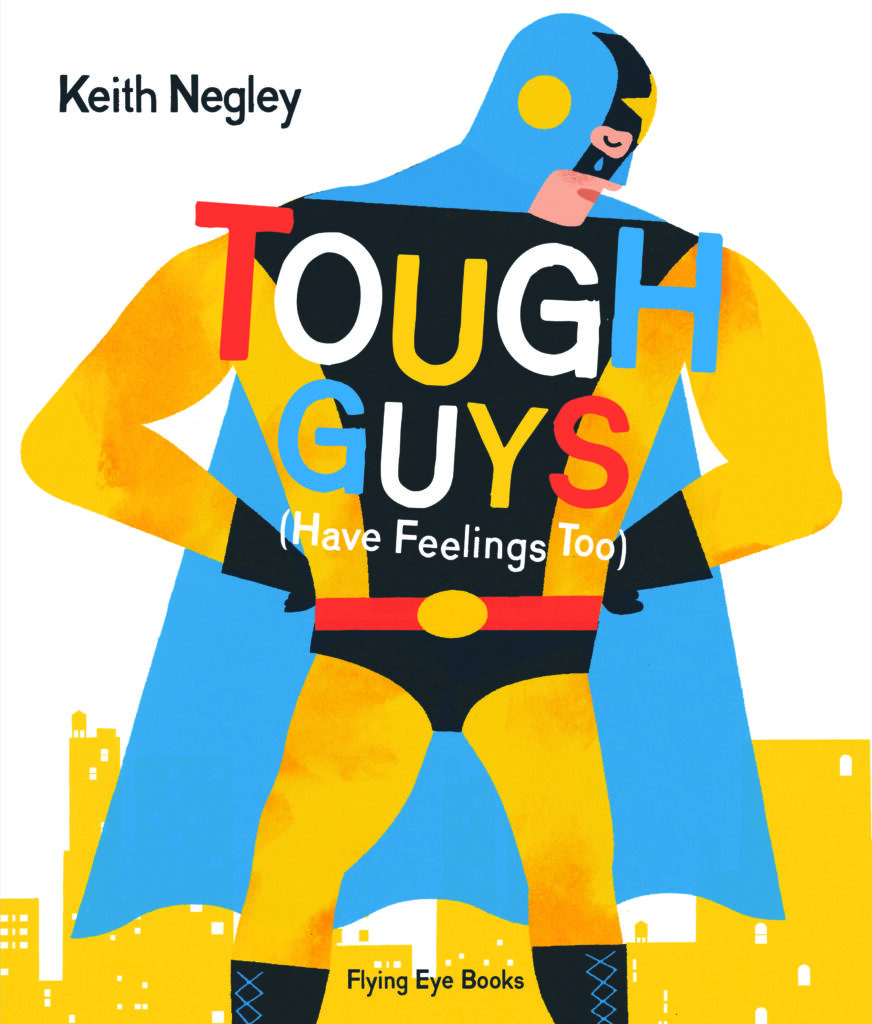
Tough Guys (Have Feelings Too)
Written and illustrated by Keith Negley
The witty illustrations in this book may be even more powerful than the text. Kids will see various “tough guys” showing emotion. An astronaut in space holds a picture of his family. A wrestler cries in the locker room. A tattooed biker regrets running over a squirrel. The final image of a father and son is particularly heartwarming. Ages 3-6. Published by Flying Eye Books.
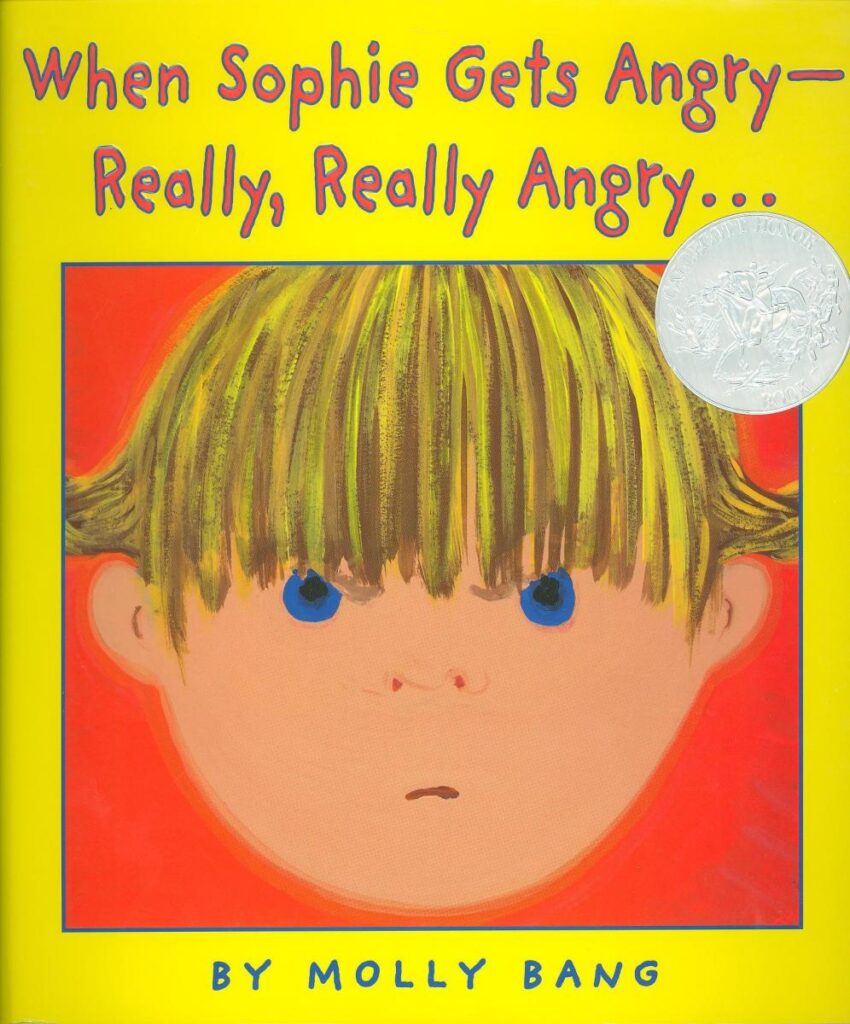
When Sophie Gets Angry — Really, Really Angry…
Written and illustrated by Molly Bang
When Sophie’s sister swipes her stuffed animal, she feels ready to explode “like a volcano.” Vibrant illustrations depict Sophie kicking, screaming, and even roaring. But then the color palette of the illustrations changes as Sophie cries a little and lets the outdoors comfort her. “This book normalizes anger and shows that it doesn’t last forever,” says an expert from the Child Mind Institute. Ages 4-8. Published by Scholastic Paperbacks.
Grief and Loss
Popular children’s books about grief, loss, and learning to heal.
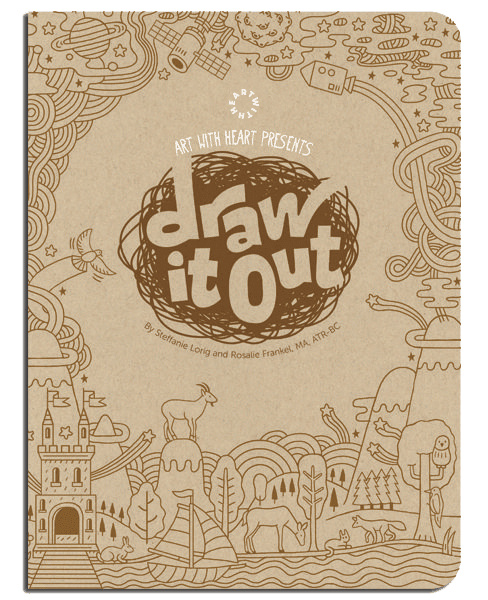
Art With Heart Presents: Draw It Out
Written by Steffanie Lorig and Rosalie Frankel
This 40-plus-page activity book uses writing and drawing to help kids work through their emotions. Activities include creating a “Circle of Strength” and using a calendar to express feelings on different days. “I use this book in therapy for grieving children and find it to be extremely effective,” says an expert at the Child Mind Institute. Ages 6-10. Published by Art With Heart.

I Miss You: A First Look at Death
Written by Pat Thomas, illustrated by Lesley Harker
This book explains, in realistic but reassuring language, why people die and how hard it can be to say goodbye. The real genius: “What About You?” boxes scattered throughout the book that contain questions you can ask children. “I particularly like that it normalizes the sad feelings around death,” says an expert at the Child Mind Institute. Ages 4-8. Published by B.E.S. Publishing.
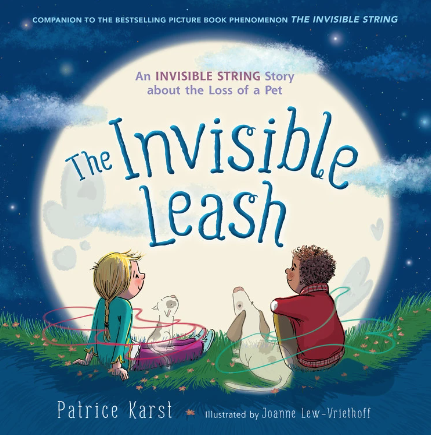
The Invisible Leash
Written by Patrice Karst, illustrated by Joanne Lew-Vriethoff
This companion book to The Invisible String focuses on the death of a pet. When Zach’s beloved dog dies, he’s sad and angry. Zach’s friend Emily tells him, “When pets aren’t here anymore, an invisible leash connects our hearts to each other forever.” Although skeptical at first, Zach begins to feel his dog’s presence. The concept of an invisible string “is a mental and visual way to recall positive memories,” says an expert from the Child Mind Institute. Ages 4–9. Published by Little, Brown Books for Young Readers.

The Invisible String
Written by Patrice Karst, illustrated by Joanne Lew-Vriethoff
This bestselling picture book introduces little ones to the concept of an invisible link between people, even when they’re separated. In the story, a mom explains to her children that there is a “very special string made of love” that connects them to everyone they love. “When you’re at school and you miss me, your love travels all the way along the string until I feel a tug on my heart,” Karst writes. The story continues with explaining how far the string reaches — to a submarine captain in the ocean, a dancer in France, and even to a beloved relative in heaven. Ages 3-8. Published by Little, Brown Books for Young Readers.

One Wave at a Time: A Story About Grief and Healing
Written by Holly Thompson, illustrated by Ashley Crowley
After Kai’s dad died, the boy’s grief manifests itself in many ways, from crying to throwing a fit to feeling flat and robotic. “The story line shows the change from struggling to recovering, and emphasizes using support networks,” says an expert at the Child Mind Institute. Ages 4-8. Published by Albert Whitman & Company.

Pumpkin and Me/Peque y yo
Written by Alicia Acosta, illustrated by Mercé Galì
In this tender tale about the loss of a pet, a black cloud forms over the head of a girl whose beloved dog, Pumpkin, has recently died. She cries so hard that she feels like there’s soap in her eyes and an octopus has wrapped itself around her heart. Then she dreams that Pumpkin licks the soap from her eyes and barks at the octopus. That’s when she realizes that Pumpkin will always be with her. “This book ties physical symptoms to grief and discusses always having the memories,” says an expert at the Child Mind Institute. This book is available in both English and Spanish language versions. Ages 4–8. Published by NuboOcho.
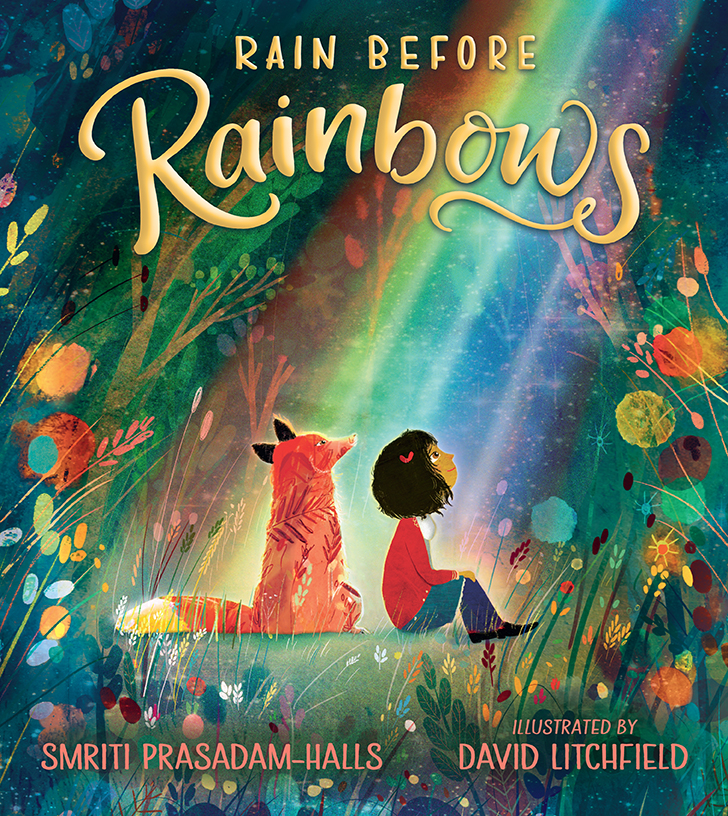
Rain Before Rainbows
Written by Smriti Prasadam-Halls, illustrated by David Litchfield
Following a fire at their castle home, a girl in a red cape and her fox navigate an arduous and frightening journey before reaching a bright future. Stunning illustrations and short, rhyming text convey a powerful lesson. “For children at different stages of grief, this book includes a message of hope that after the pain, things will get better,” says an expert from the Child Mind Institute. Ages 3–7. Published by Candlewick Press.
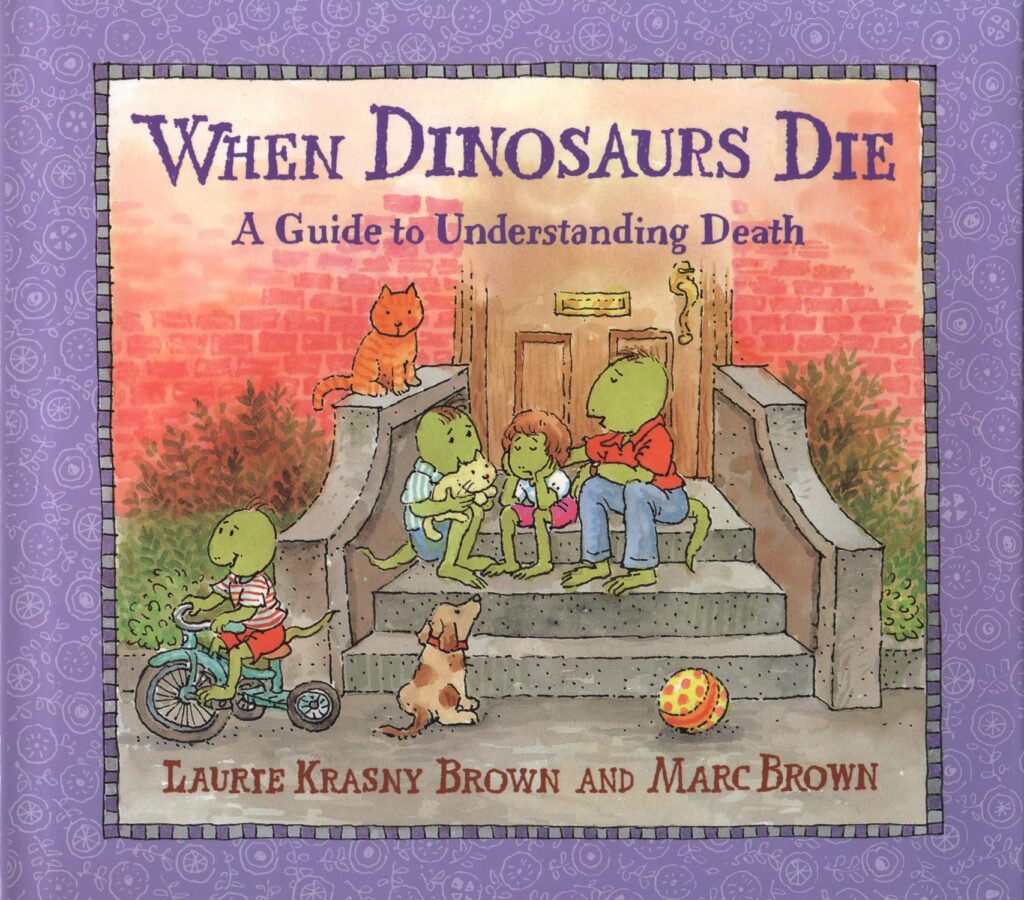
When Dinosaurs Die: A Guide to Understanding Death
Written and illustrated by Laurie Krasny Brown and Marc Brown
With simple language and sweet drawings that aren’t too graphic, this picture book addresses many questions children have about death, how people say goodbye, and how we remember people we’ve lost. The best section focuses on feelings about death and encourages kids to talk about them, says an expert at the Child Mind Institute. Ages 5-9. Published by Little, Brown Books for Young Readers.
Identity
Popular children’s books on finding identity and appreciating differences.
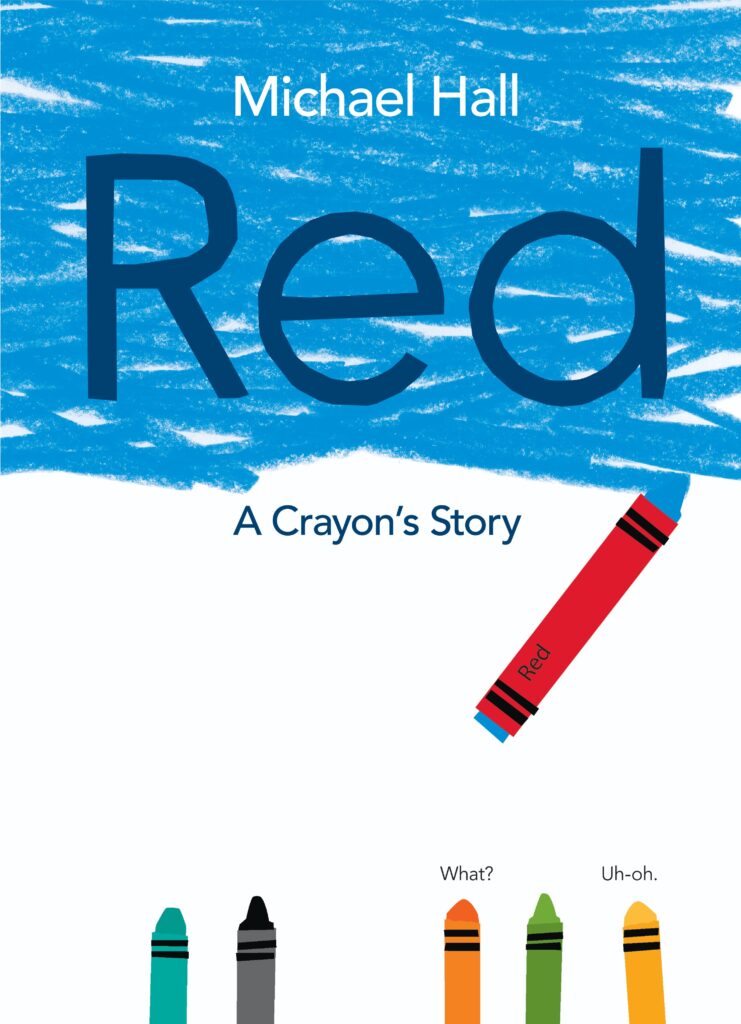
Red: A Crayon’s Story
Written and illustrated by Michael Hall
Your child will pick up on the problem right away: A blue crayon is mistakenly labeled red. He can’t do what everyone expects of him (and other crayons give him all kinds of advice about how to be a better red) until one day he meets a purple crayon who sees his true color. Then he soars. “The message about identity is great,” says an expert at the Child Mind Institute. Ages 5-10. Published by Greenwillow Books.
Neglect
Popular children’s books on neglect and how caregivers should act.

Home for a While
Written by Lauren H. Kerstain, illustrated by Natalia Moore A licensed social worker crafts a compelling and authentic story about what it feels like for a child who has lived in a lot of foster homes. When Calvin moves in with Maggie, he doesn’t want to unpack his suitcase or get a goodnight hug. He accidentally breaks things multiple times, testing Maggie’s patience. But she always responds with kindness and wise advice. The ending is heartwarming. “This book provides an example of building a warm relationship with a caregiver while honoring a relationship with a biological parent,” says an expert from the Child Mind Institute. Ages 4–9. Published by Magination Press.

Somebody Cares: A Guide for Kids Who Have Experienced Neglect
Written by Susan Farber Straus, PhD, illustrated by Claire Keay
This book puts into words a lot of what kids who experienced neglect feel but have a hard time expressing. A particularly poignant passage: “I tried to be strong and brave, but often I was worried and scared. I tried to do the best with what I had, but sometimes I needed more.” Eventually, a social worker and therapist intervene, and the story ends sweetly. “It’s great that the illustrations show diverse families,” adds an expert at the Child Mind Institute. Ages 6-12. Published by Magination Press.
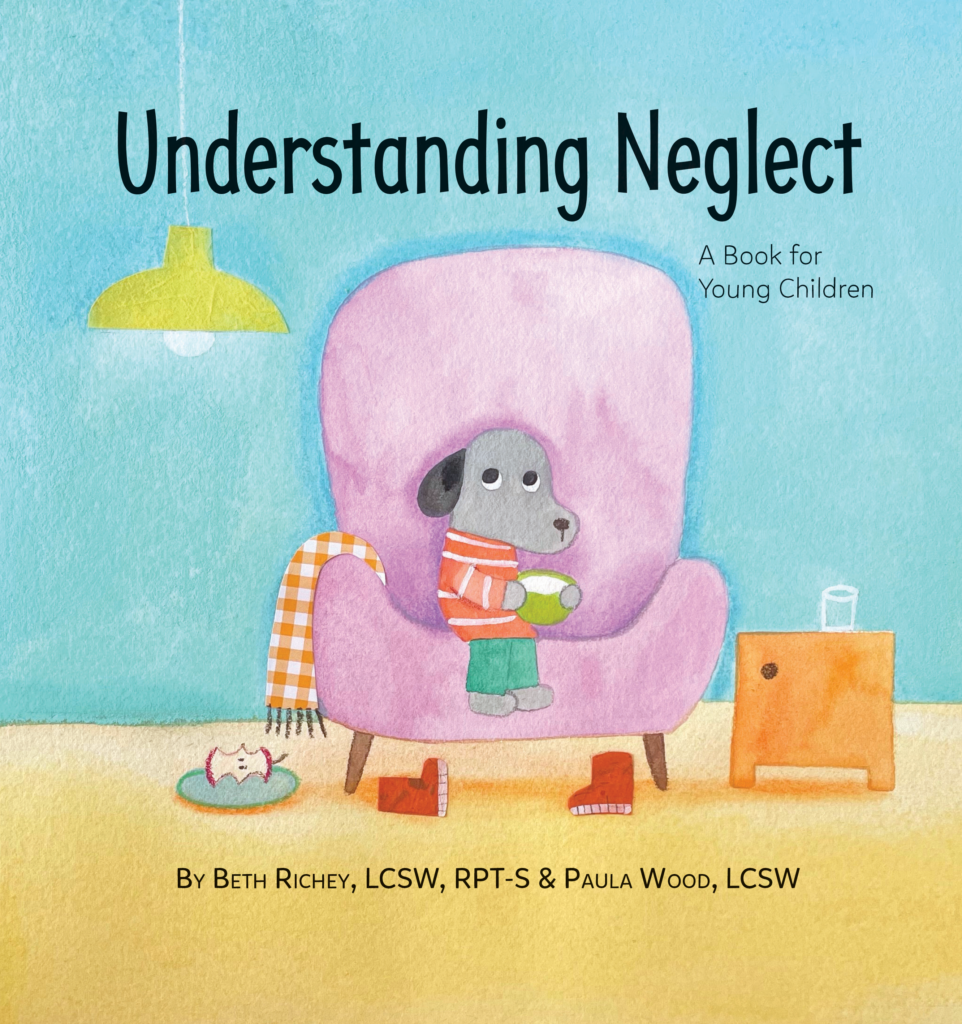
Understanding Neglect
Written and illustrated by Beth Richey and Paula Wood
In a calm, reassuring tone, two trauma therapists explain the things that children should be able to count on from the grown-ups they belong to —basic needs, such as food, a home, schooling, safety, and love. Sometimes the adults can’t provide these things, the book notes, and the kids need to be cared from by someone else. Soothing illustrations of animal characters help put children at ease, and they are assured that they deserve to have everything they need to be healthy and happy. “Using direct, child-friendly language, the book is particularly helpful for kids who see Children Protective Service workers or lawyers,” says an expert from the Child Mind Institute. Ages 4–8.Published by Warren Publishing.
OCD
Popular children’s books on OCD and related disorders.
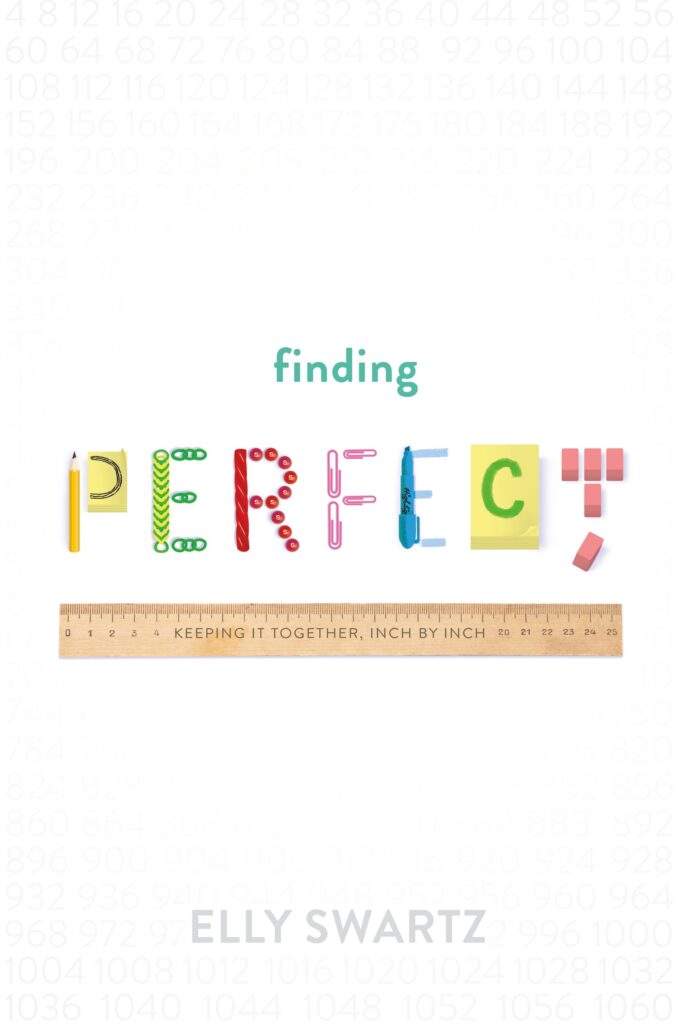
Finding Perfect
Written by Elly Swartz
In this moving chapter book, 12-year-old Molly Nathan struggles with undiagnosed obsessive-compulsive disorder as she navigates middle school friendships and life without her mom, who has temporarily relocated for a job. Early on, many of Molly’s OCD tendencies — like organizing takeout menus alphabetically and looking for the patterns in phone numbers — are casually woven into a story line that focuses on her desire to win the poetry slam so her mom will come home for the banquet. But, as time passes, her OCD worsens: “I used to just wash my hands, and then I started washing my hands a lot, and now I scrub them raw,” Swartz writes. When Molly becomes fixated on counting, her dad takes her to a doctor who provides her diagnosis. Ages 9-14. Published by Farrar, Straus and Giroux.

Just Roll With It
Written and illustrated by Veronica Agarwal and Lee Durfey-Lavoie
Maggie, a sixth grader, tries to live up to her older sister’s achievements in this graphic novel that spotlights anxiety and obsessive-compulsive disorder. When she comes home from school, Maggie goes through a ritual of switching the lights on and off. She also rolls a 20-sided die to help her make decisions. Although she resists therapy at first, she eventually goes. “Maggie comes to terms with her behavior, puts a name to it, and copes with it,” says an expert from the Child Mind Institute. References to Dungeons and Dragons as well as anime help engage reluctant readers. Ages 8–12. Published by Random House Graphic.
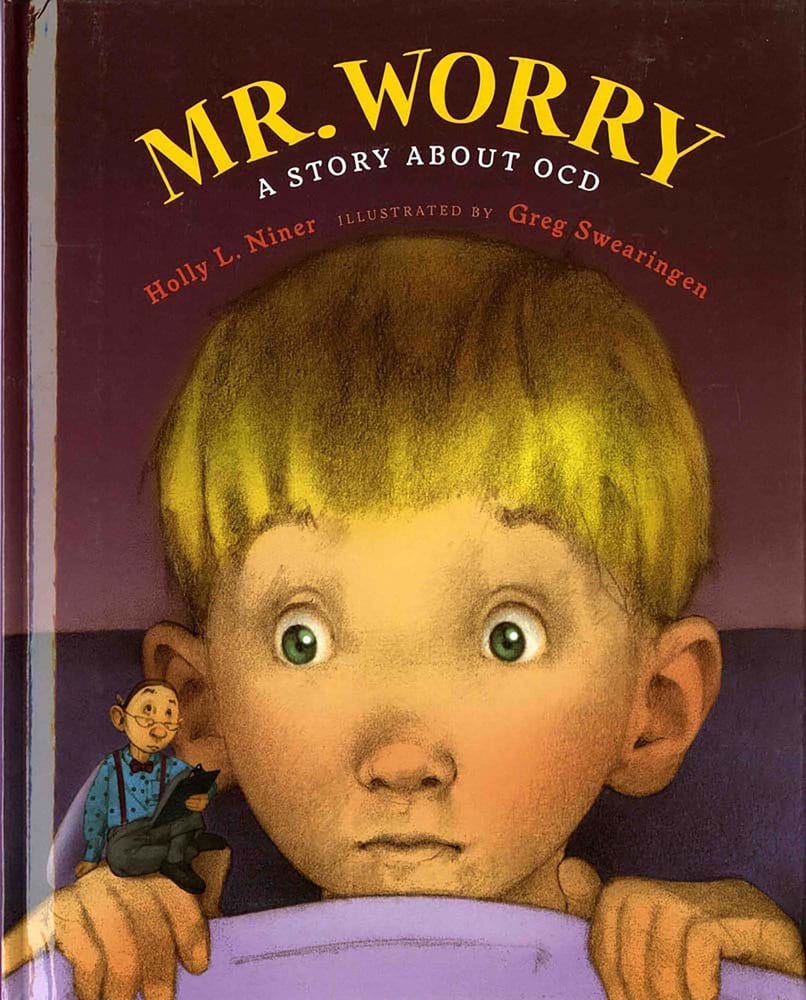
Mr. Worry: A Story About OCD
Written by Holly L. Niner, illustrated by Greg Swearingen
Before he goes to sleep, Kevin asks his mom the same questions over and over and lines things up neatly so “his mind doesn’t get sweaty.” By the end of the story, Kevin’s OCD has improved thanks to therapy and medication. Ages 7-12. Published by Albert Whitman & Company.
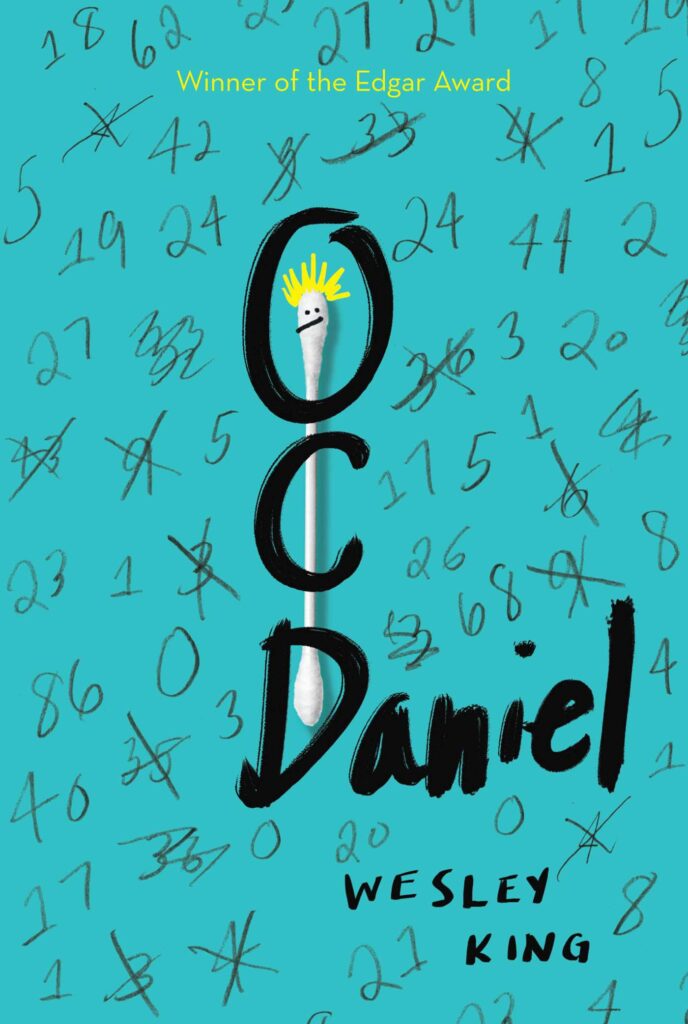
OCDaniel
Written by Wesley King
This YA book combines a coming-of-age tale with a mystery novel. The protagonist is 13-year-old Daniel, who hides his “zaps” — rearranging cups into geometric patterns, tying his shoes a lot, and counting things — from other kids at school and at football practice. Written in the first person, “this book does an excellent job of describing the stigma and has a very accurate description of how obsessions and compulsions take hold,” says an expert at the Child Mind Institute. Eventually, Daniel discovers that he has OCD, moves toward self-acceptance, and helps a friend solve a mystery. Ages 12+. Published by Simon & Schuster/Paula Wiseman Books.
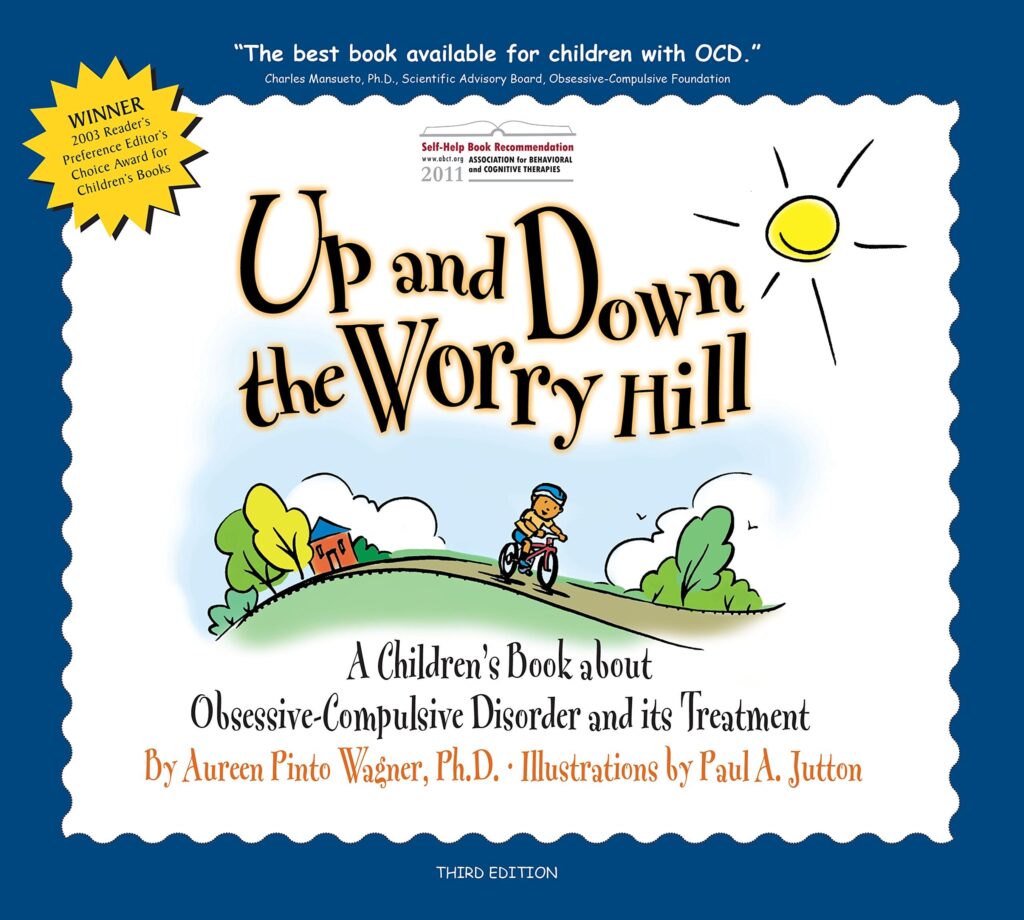
Up and Down the Worry Hill: A Children’s Book About Obsessive-Compulsive Disorder and Its Treatment
Written by Aureen Pinto Wagner, PhD, illustrated by Paul A. Jutton
This story about a young boy with OCD explains, in child-friendly language, not only what the disorder is and how it interferes with his life, but how treatment with cognitive behavior therapy works to help kids escape it. It’s best read with your child. Ages 7-10. Published by Lighthouse Press.
Self-Esteem
Popular children’s books on self-esteem and celebrating our differences.
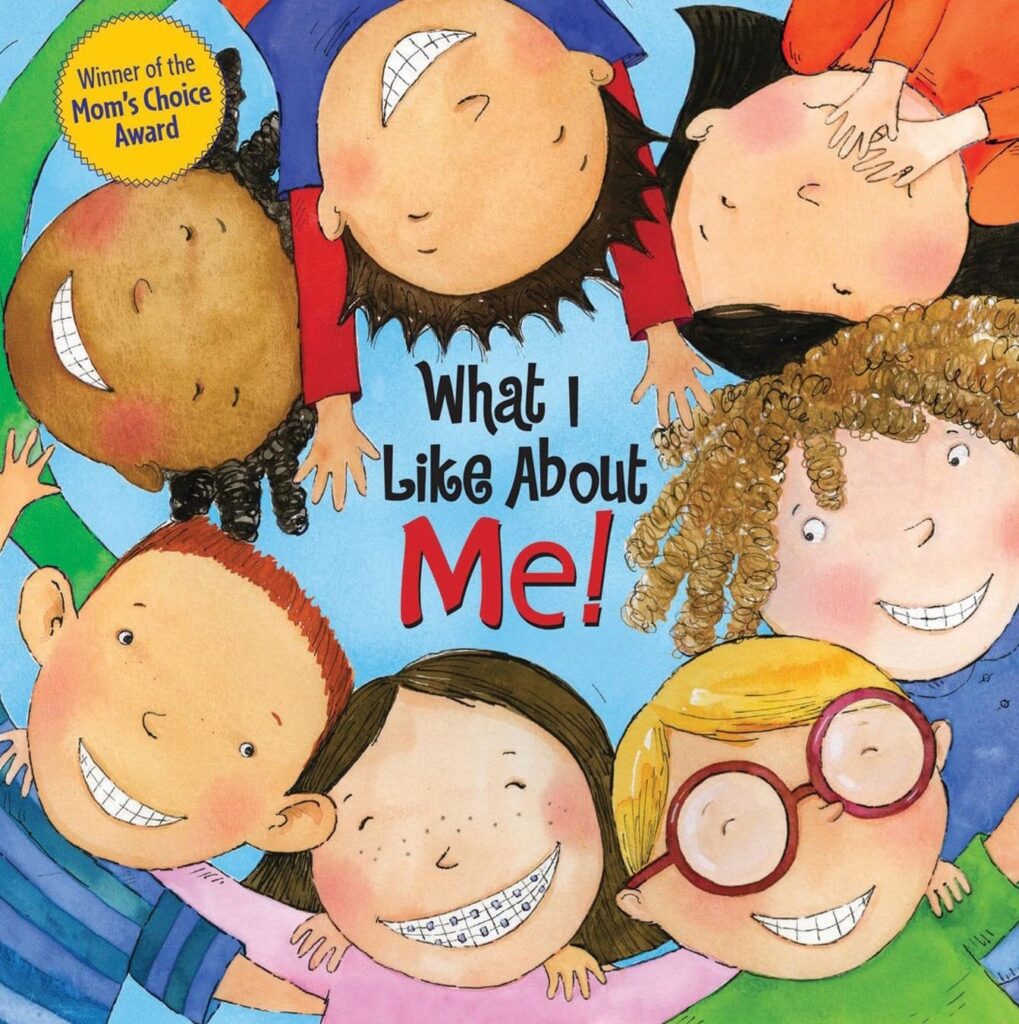
What I Like About Me!
Written by Allia Zobel Nolan, illustrated by Miki Sakamoto
In this simple book for young children, students at school celebrate their diversity — from braces to glasses, curly hair to big feet. “It provides a very positive message about the benefit of those differences,” says an expert at the Child Mind Institute. Ages 3-7. Published by Studio Fun International.
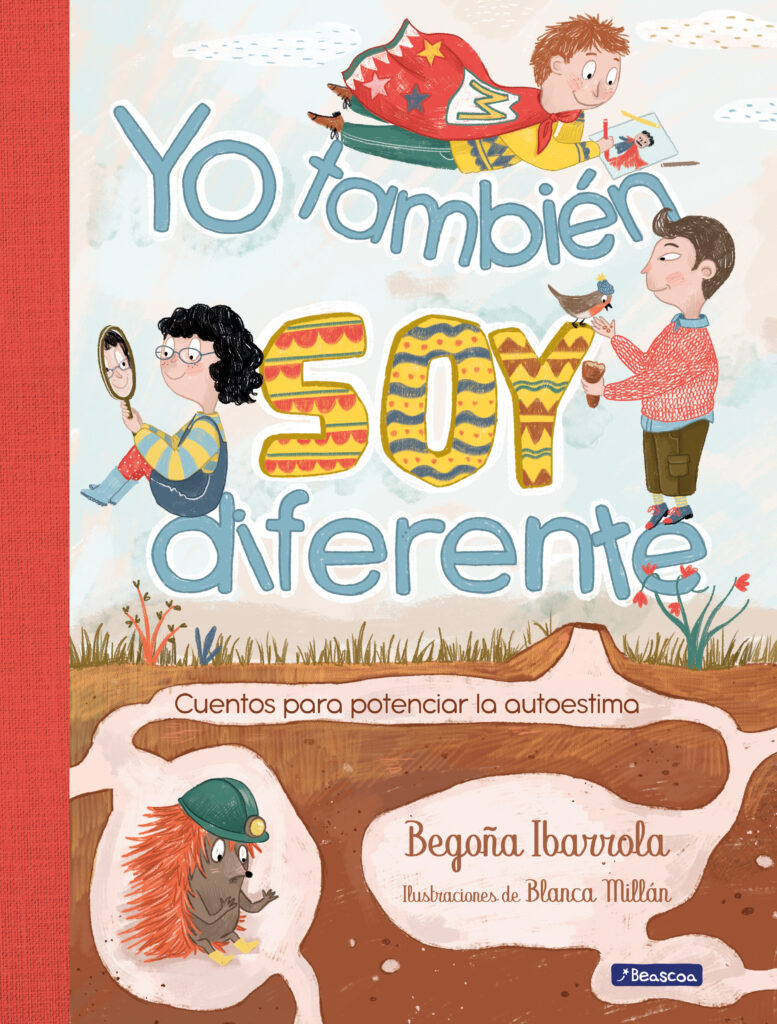
Yo también soy diferente
Written by Begoña Ibarrola, illustrated by Blanca Millan
This collection of six stories, published exclusively in Spanish, is designed to increase a child’s self-esteem. “The book has great visuals and provides suggestions for parents and teachers,” says an expert at the Child Mind Institute. Ages 7–9. Published by Beascoa.
Selective Mutism
Popular children’s books on selective mutism and learning to speak in public.

Bravery Grows
Written by Dr. Melissa Giglio and Daisy Geddes
Illustrated by Ira Baykovsk
This sweet, rhymed story is about a little girl who is lively and boisterous at home but freezes up and can’t speak when she’s at the playground or at school. Her parents encourage her to try “brave talking” and she practices until her confidence swells and her words flow. “It introduces facing fears by taking small steps and illustrates how it takes practice to build brave muscles,” says a selective mutism expert from the Child Mind Institute. Ages 4–8. Published by Brave Mighty Minds.
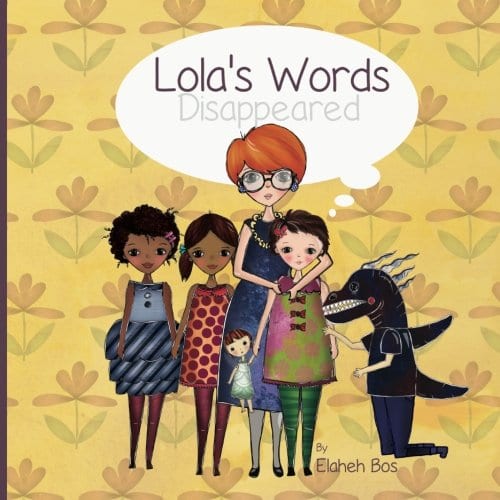
Lola’s Words Disappeared
Written and illustrated by Elaheh Bos
This book helps readers understand that kids can be super verbal at home, but, in public, words seem to get stuck. Lola, the main character, couldn’t say a word at school. But a gradual approach, starting by practicing with a school friend at home, enabled her to find her voice. Ages 5-8. Published by CreateSpace Independent Publishing Platform.

Talia Turtle’s Brave Bubbles
Written by Julie Mensh Graham
This tells the story of a turtle with selective mutism whose friends are patient and take the time to interact with her without putting pressure on her to speak. “This gives her a chance to relax and get comfortable enough to use her brave voice,” notes a Child Mind Institute expert. “Helpful strategies for kids with SM, as well as for their family and friends, are woven into the narrative.”Ages 3 and up. Published by Nightingale Books
Sensory Processing
Popular children’s books on sensory processing and finding courage.

Stanley Will Probably Be Fine
Written by Sally J. Pla, illustrated by Steve Wolfhard
In this funny chapter book, middle-schooler Stanley is on a mission to get VIP passes to Comic Fest, which means he has to win the Trivia Quest treasure hunt happening downtown. He’s great with comic trivia, but his sensory sensitivities and anxiety can sometimes get in the way. With the help of a brave new neighbor and a superhero that he invents, Stanley finds the courage he needs. “By the end of the book, Stanley is more socially involved and braver than ever before,” says an expert at the Child Mind Institute. Ages 8-12. Published by HarperCollins.
Tourette’s Syndrome
Popular children’s books on tourette’s syndrome and related disorders.
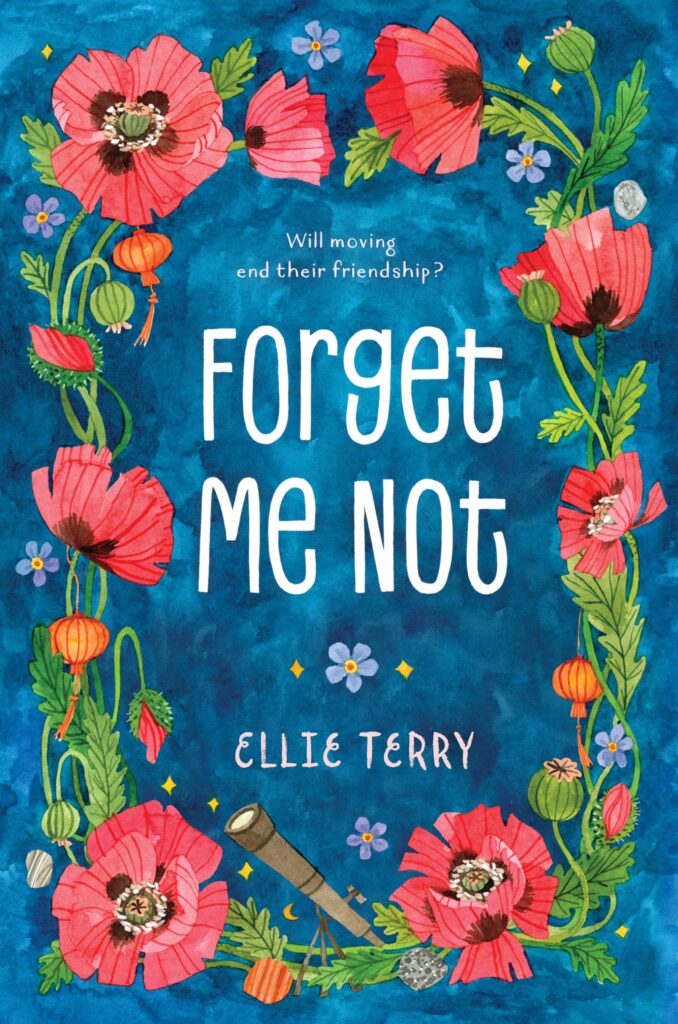
Forget Me Not
Written by Ellie Terry
Toggling between verse and prose, this book is written from the points of view of two students: Calli, who has Tourette’s Syndrome, and her classmate Jinsong. Most students tease and reject Calli because of her tics. “I walk into the boys’ locker room, and all I hear is: ‘The new girl wears old clothes. The new girl rolls her eyes. The new girl makes creepy sounds with her throat,” says Jinsong. “It’s all true. But somehow it feels wrong to hear them say it.” Readers will be satisfied by the end of the story when Calli begins to stand up for herself and find confidence, says an expert at the Child Mind Institute. Ages 8-12. Published by Square Fish.
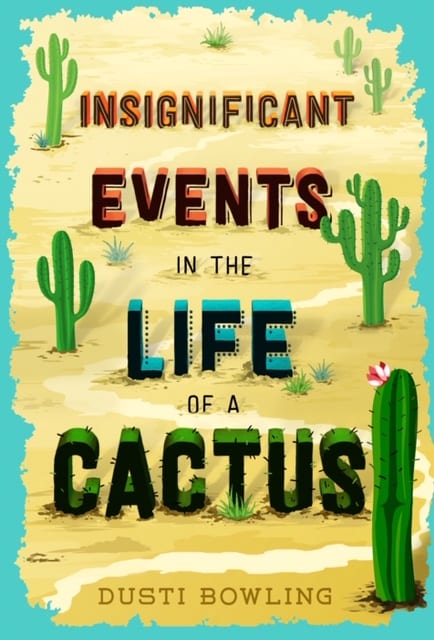
Insignificant Events in the Life of a Cactus
Written by Dusti Bowling
Born without arms, the main character, Aven, makes friends with Conner, a classmate who has Tourette’s Syndrome. Their relationship gives readers a window into life with a disability through honest (and sometimes funny) dialogue. One example: “Conner had gone to two support group meetings, and I got the feeling he was actually starting to enjoy them, even though he gave Dexter the stink eye.” Overall, the book does a good job of explaining Tourette’s Syndrome and the types of treatment, notes an expert at the Child Mind Institute. Ages 12+. Published by Sterling Children’s Books.
Trauma
Popular children’s books covering trauma and helping children understand traumatic experiences.
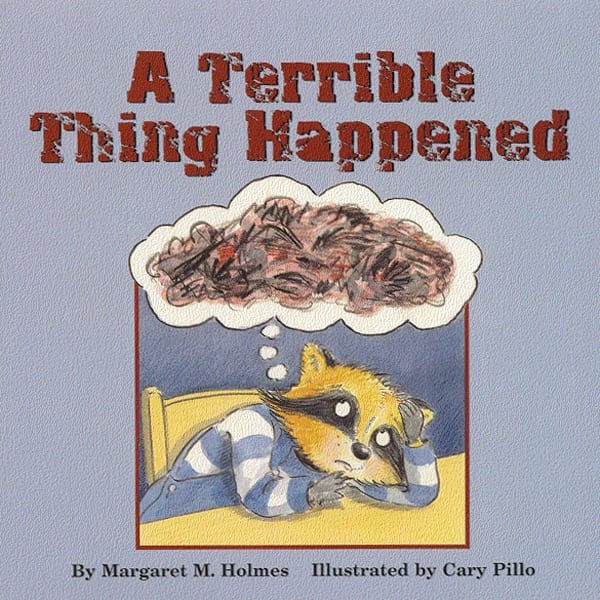
A Terrible Thing Happened
Written by Margaret M. Holmes, illustrated by Cary Pillo
When Sherman, a raccoon, saw something that upset him, he became nervous, didn’t sleep well, and felt sad. “Through Sherman, the book explains the symptoms of post-traumatic stress disorder in simple terms that young children can understand,” says an expert at the Child Mind Institute. “The book also covers the importance of talking about traumatic things to help feel better.” Another plus: The story doesn’t specify exactly what happened to Sherman, so the book could be useful in many situations. Ages 5-9. Published by Magination Press.
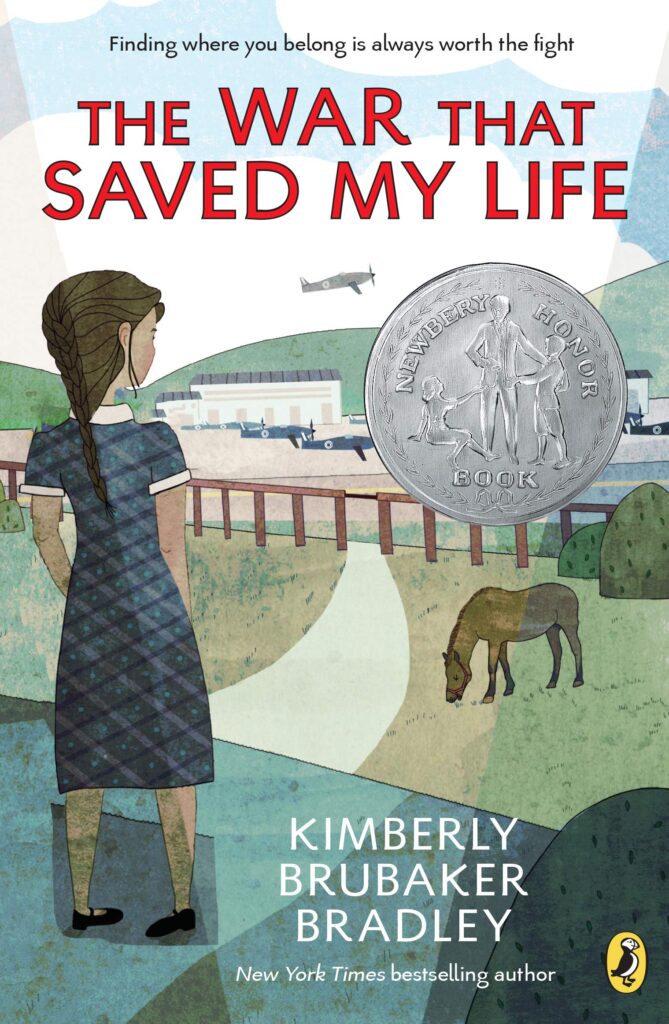
The War That Saved My Life
By Kimberly Brubaker Bradley
During World War II, 10-year-old Ava escapes her traumatic life with her mom and goes to the countryside, where she learns to ride a pony and read. But in the country she is still struggling with post-traumatic stress disorder; for instance, going into a bomb shelter reminds her of being locked in a kitchen cabinet in her mom’s apartment. Because of some mature language and themes, it’s better read with your child. Ages 9-12. Published by Puffin Books.
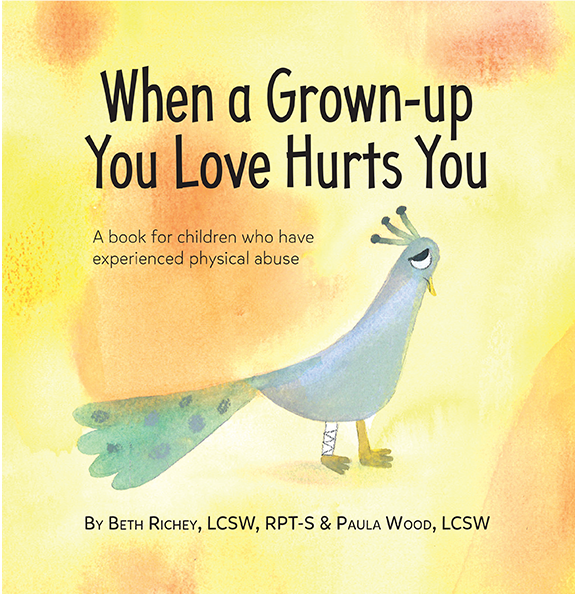
When a Grown-Up You Love Hurts You
Written and illustrated by Beth Richey and Paula Wood
Two social workers team up on this book for children who have experienced physical abuse. Using cute illustrations of animals, the book explains that it’s not okay for a grown-up to hurt a child, no matter what the child has done. It also acknowledges that children may have conflicting feelings about the person who hurt them. “The book uses direct and child-friendly language,” says an expert from the Child Mind Institute. “It also does a good job explaining what abuse means.” Ages 4–8. Published by Warren Publishing.
